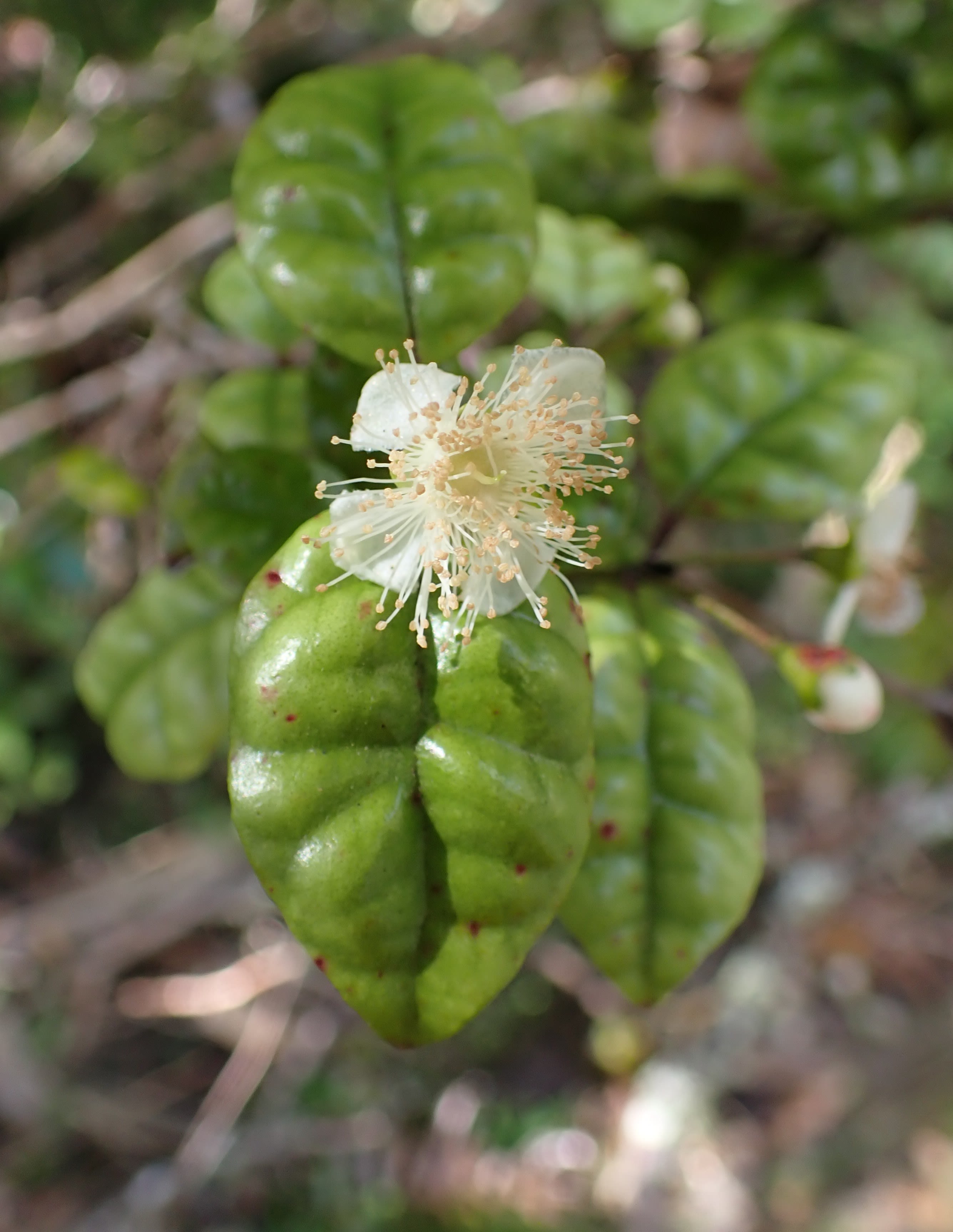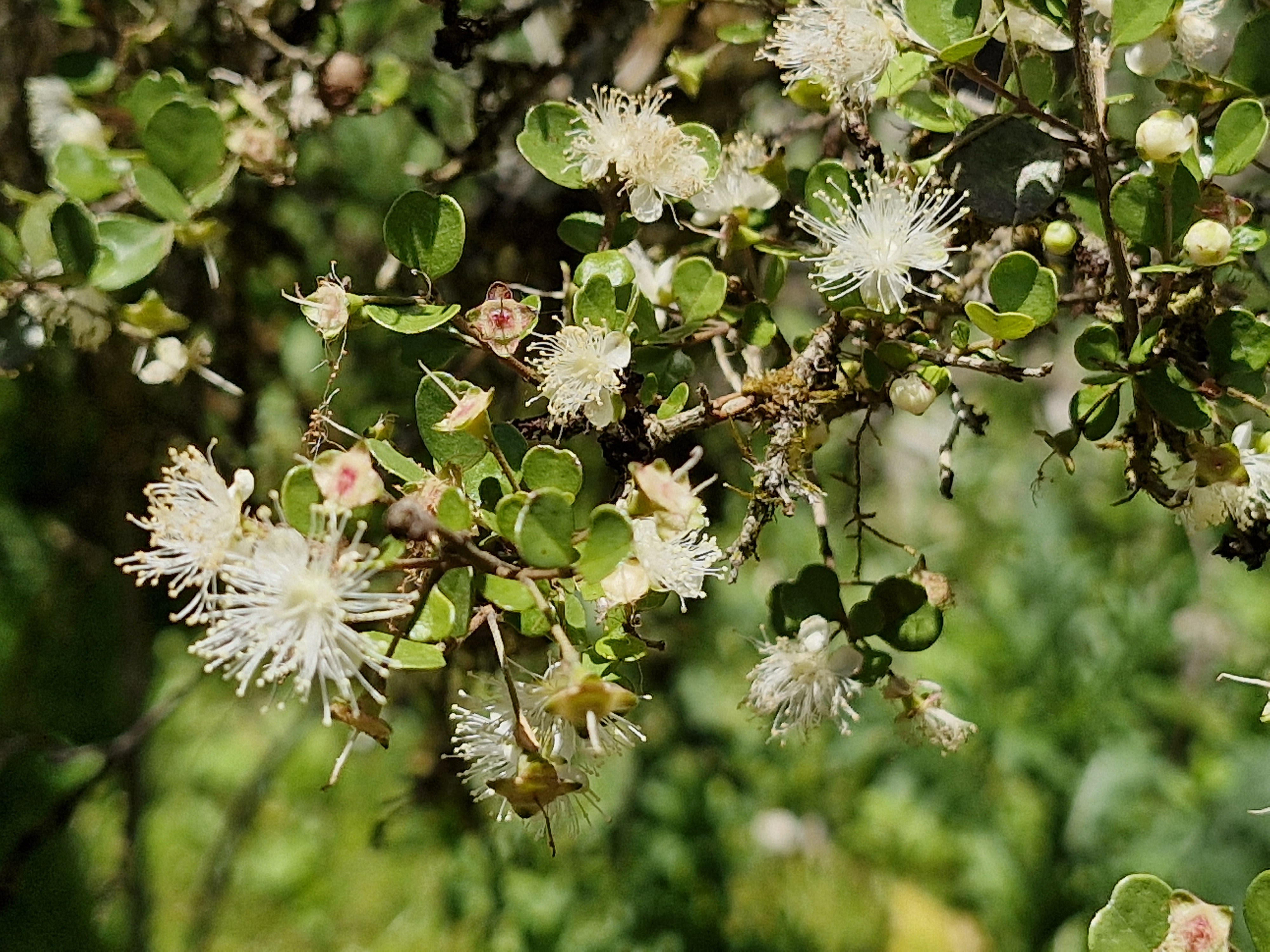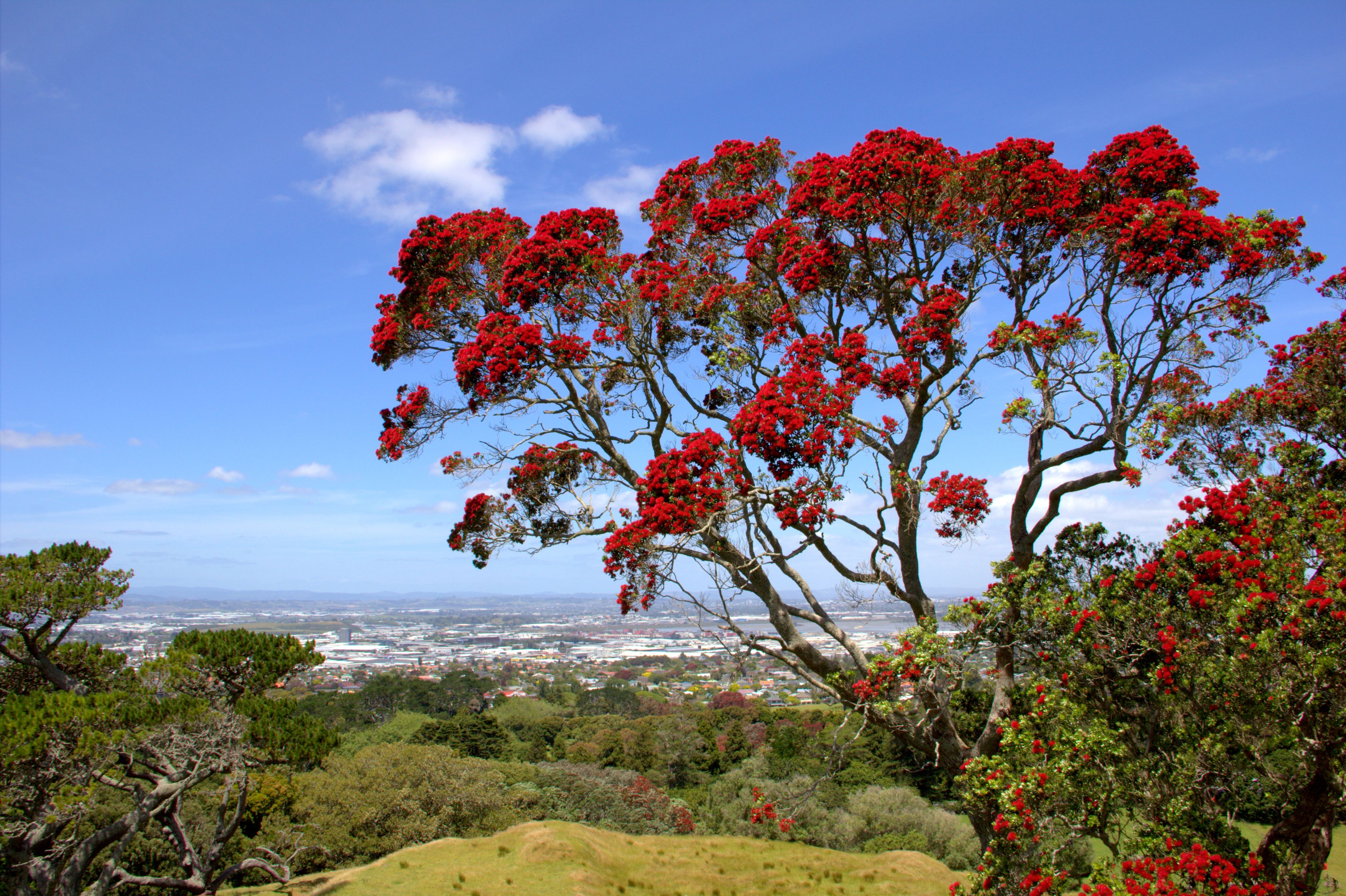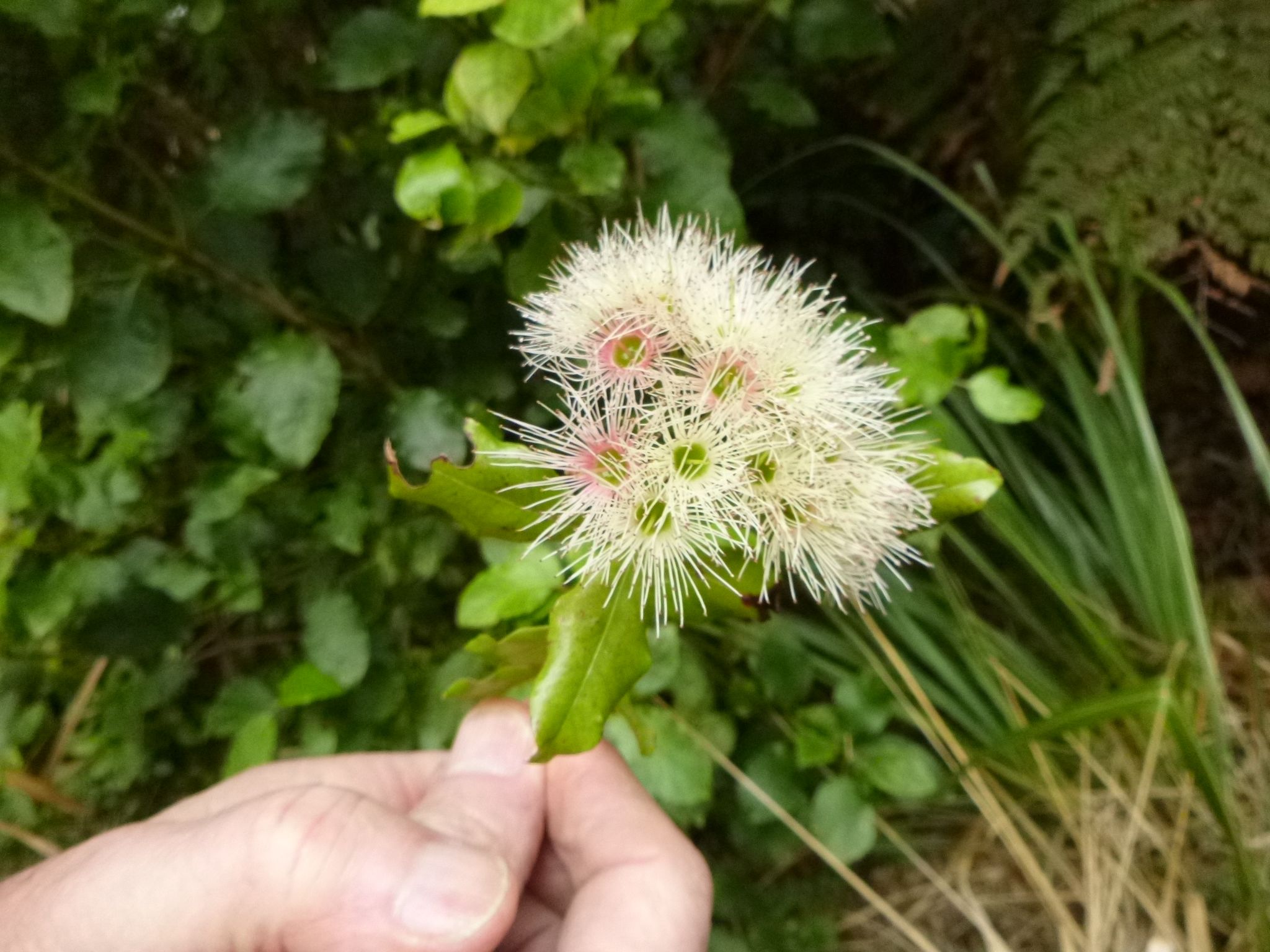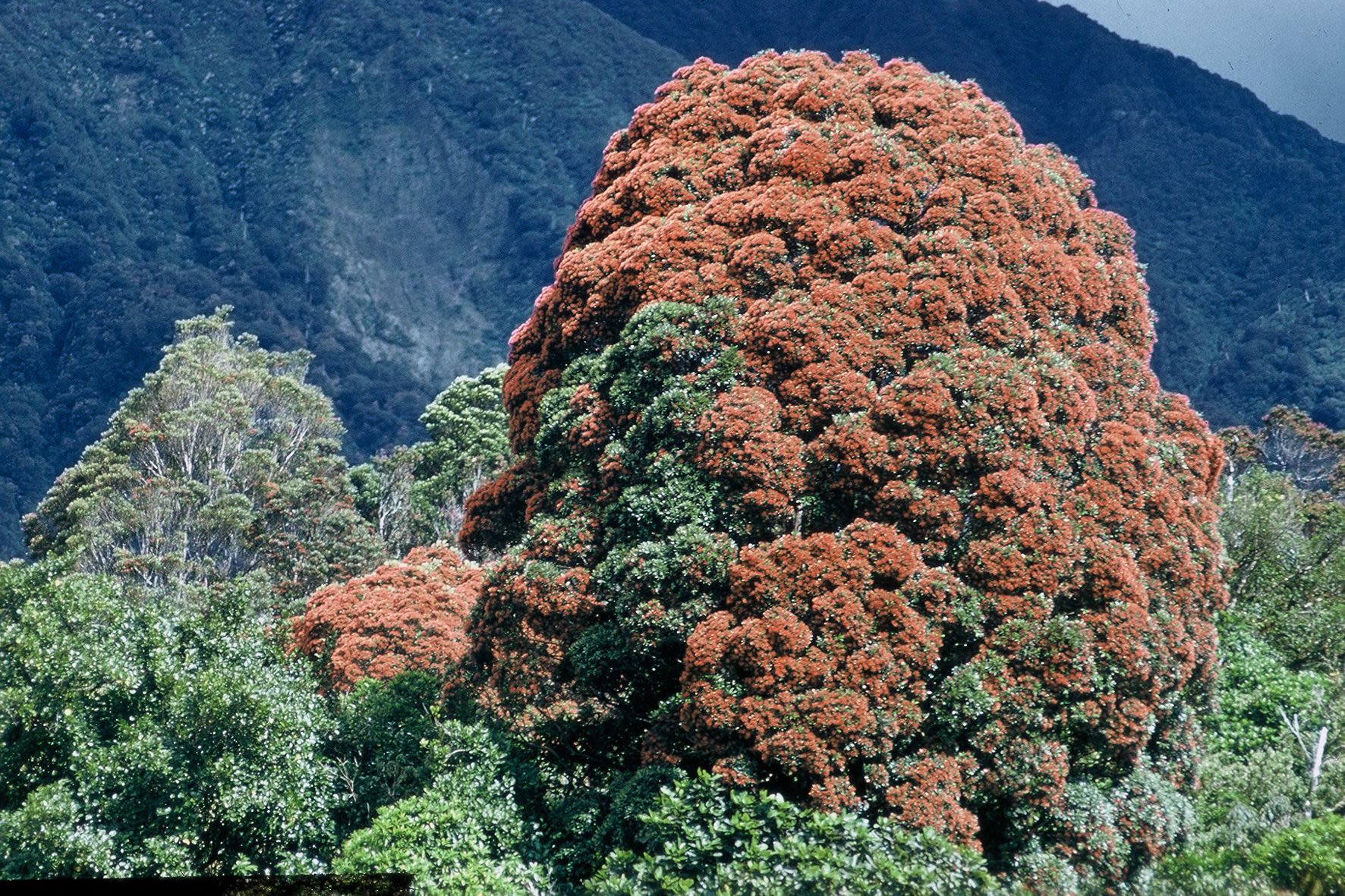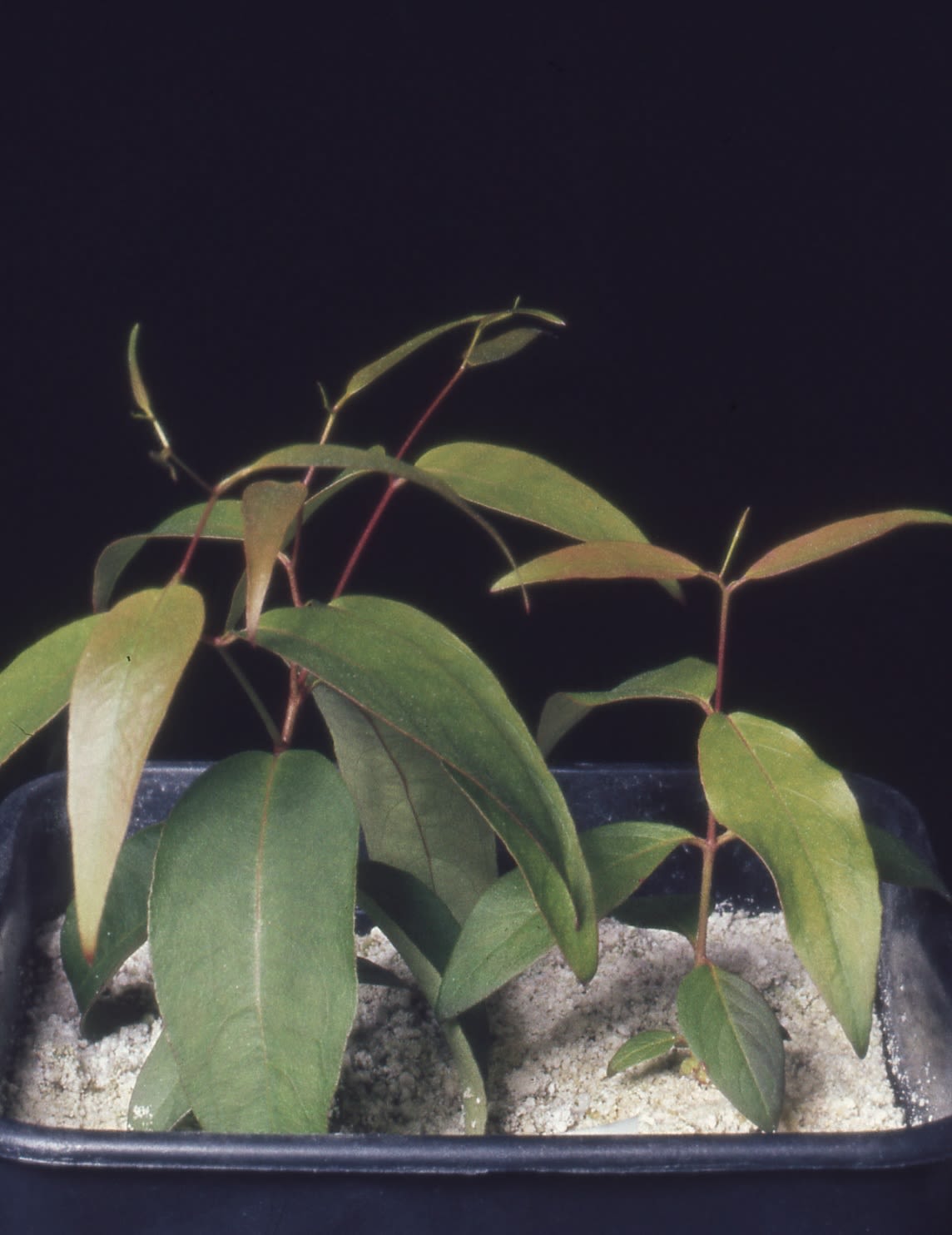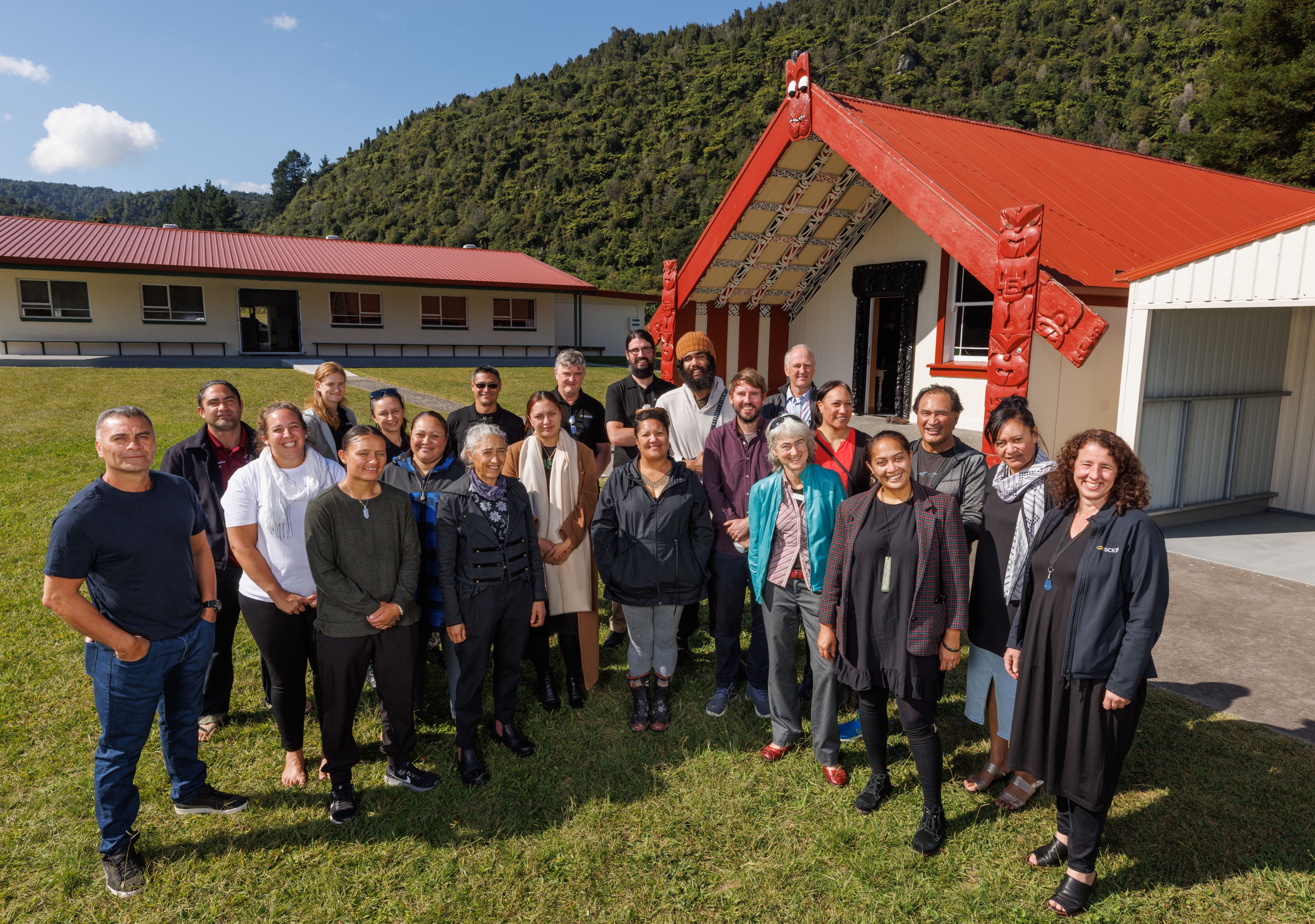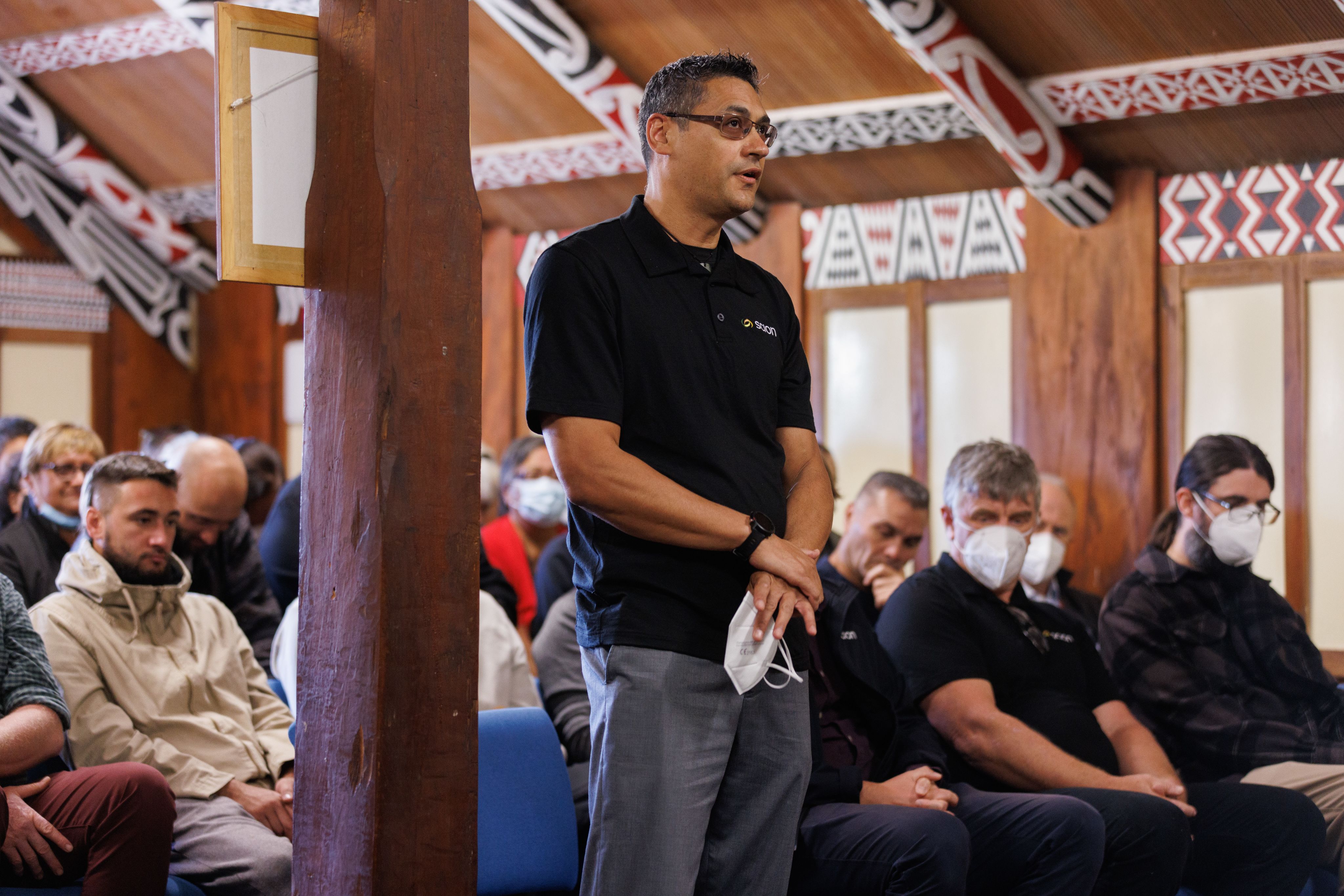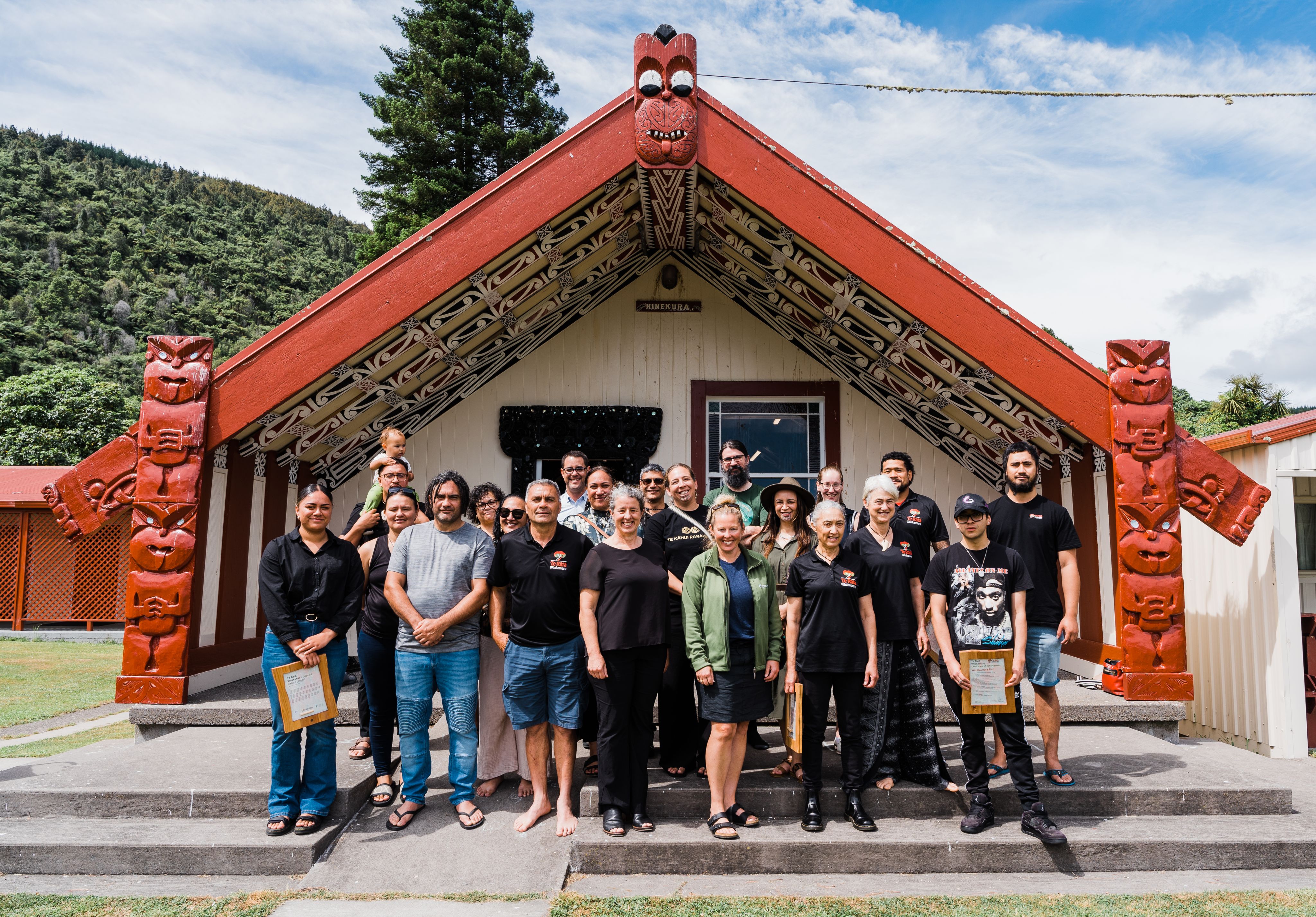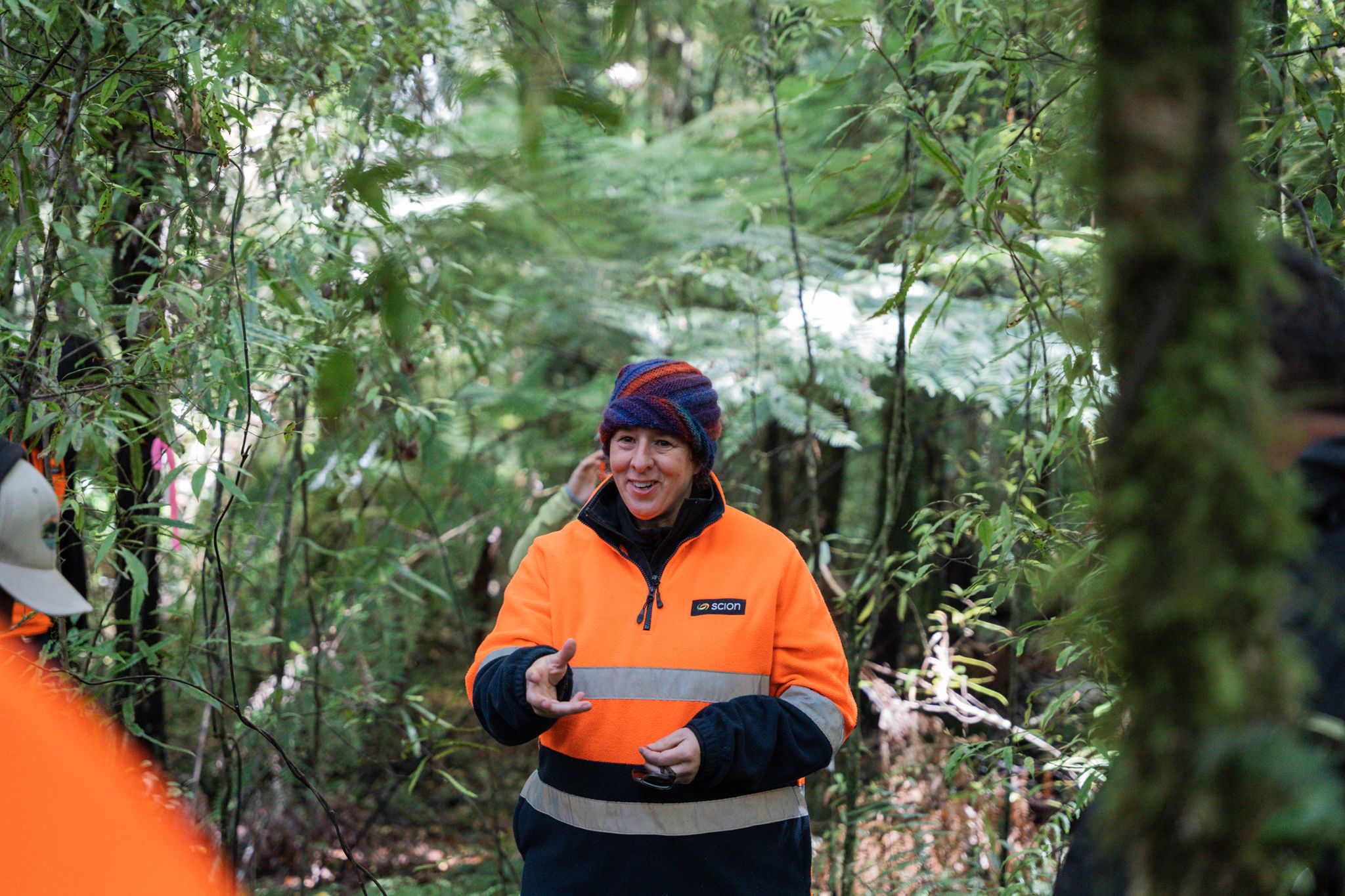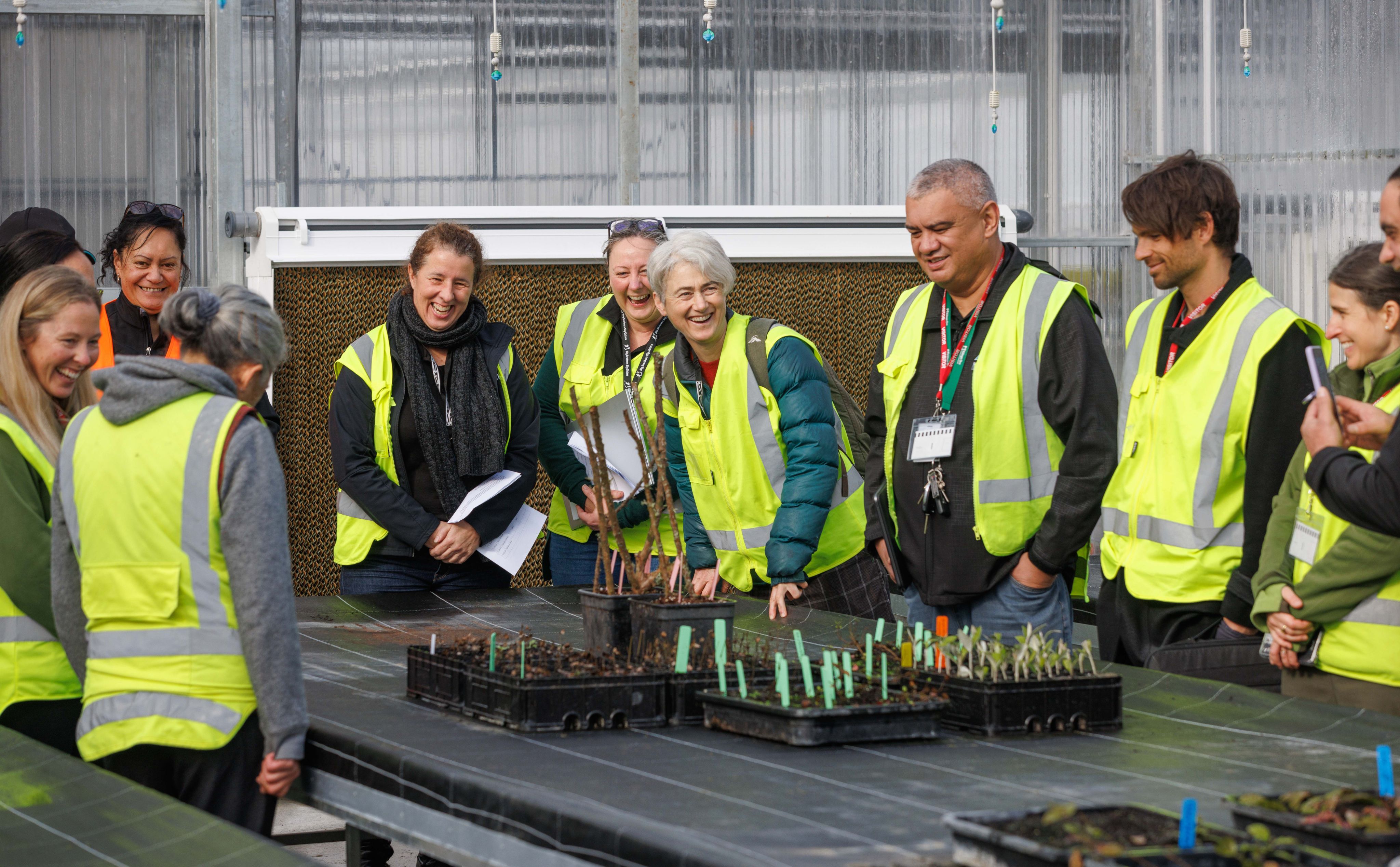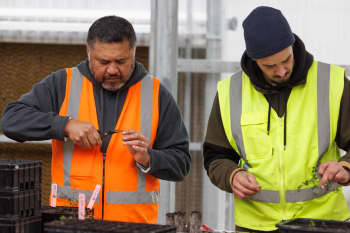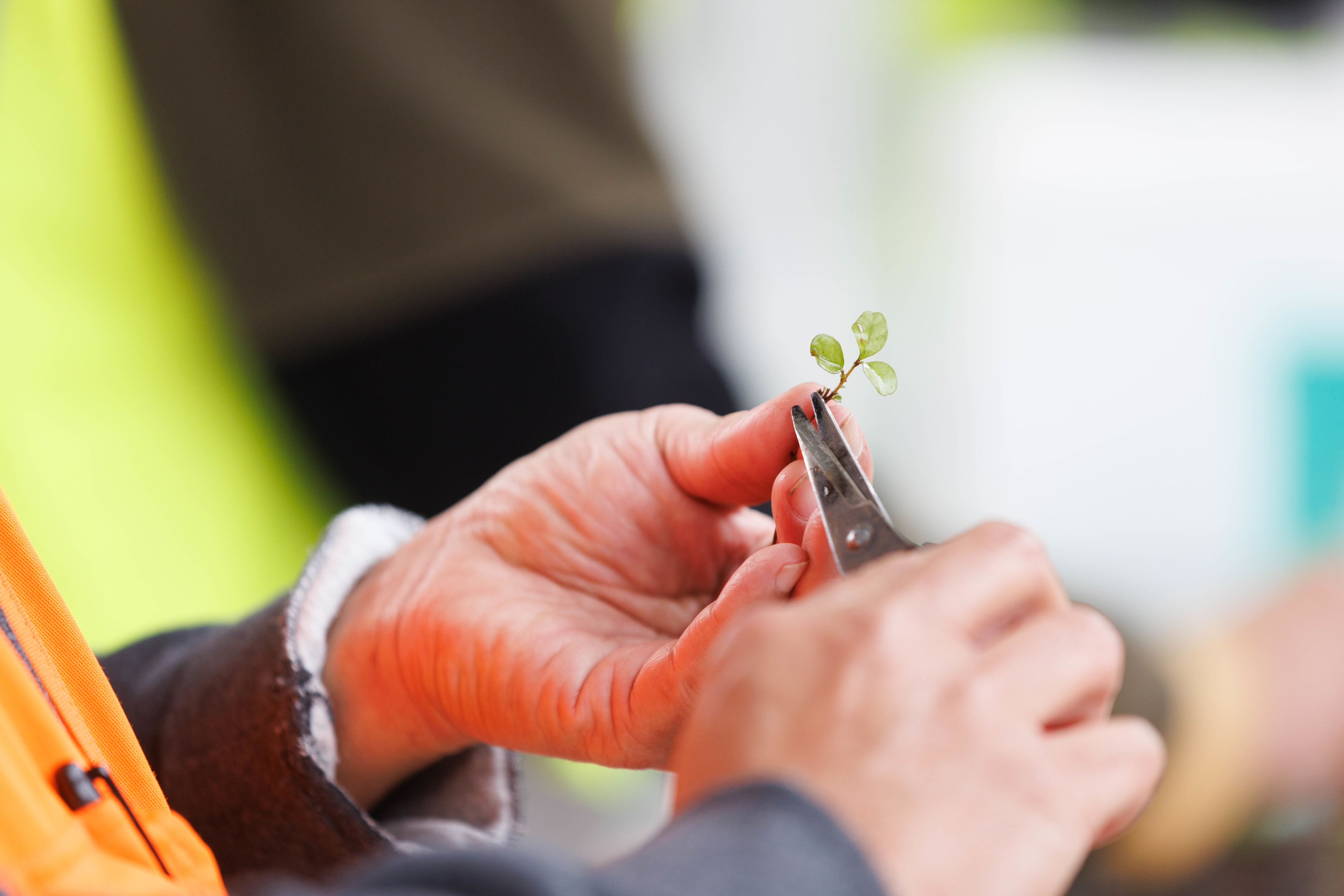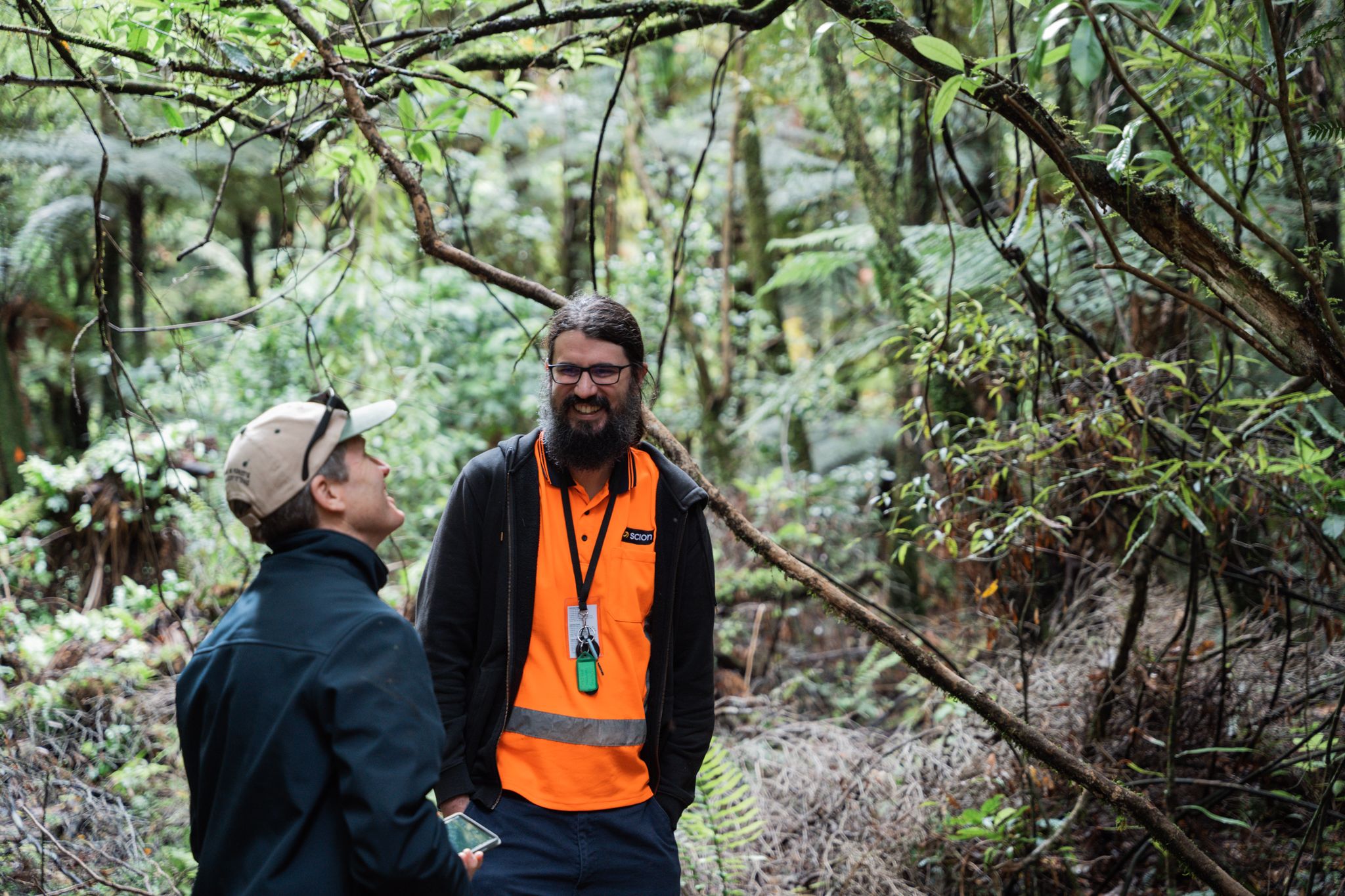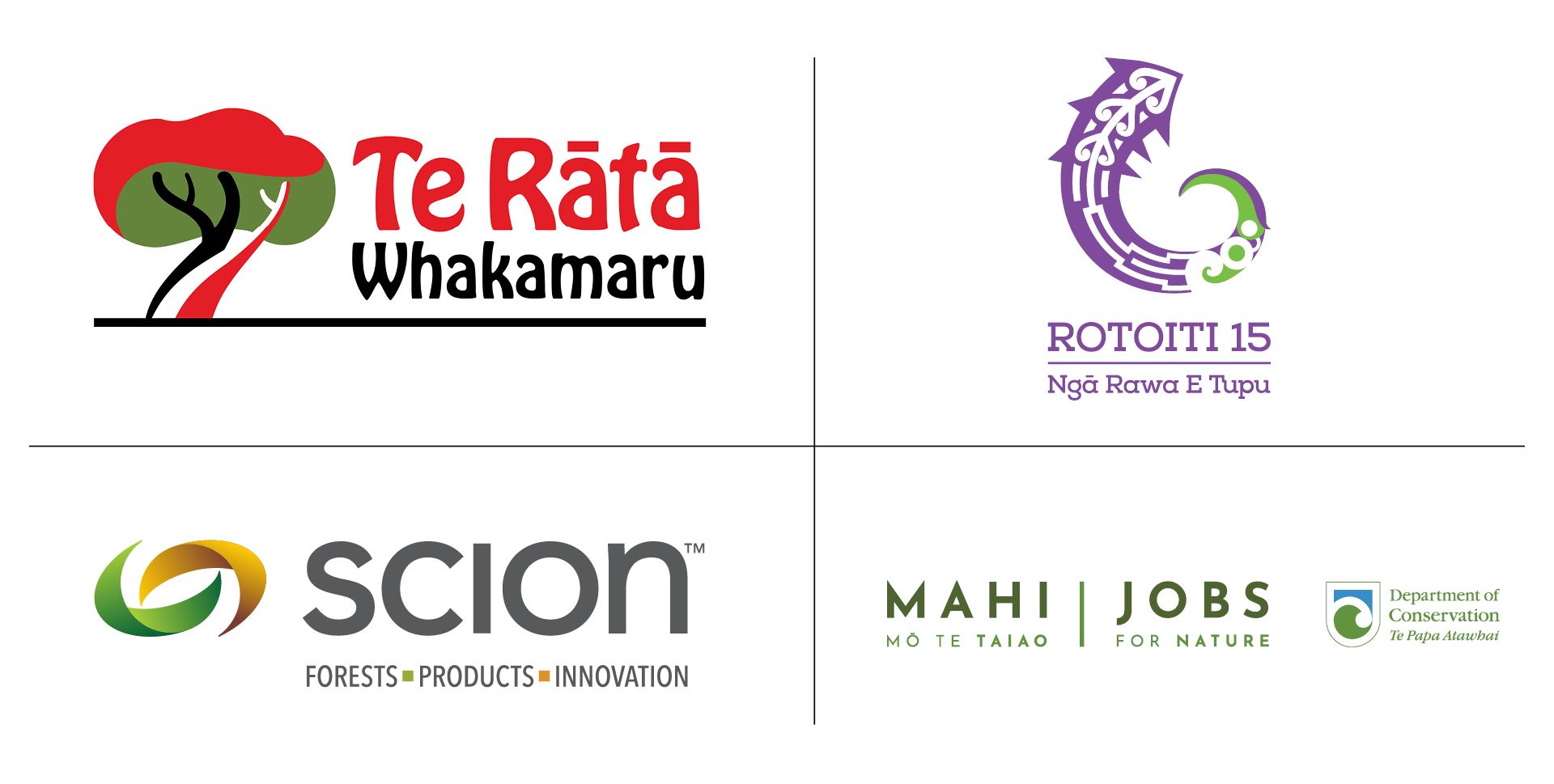Te Rātā Whakamaru
Jobs for Resistance
A collaborative fight against myrtle rust in the Bay of Plenty.
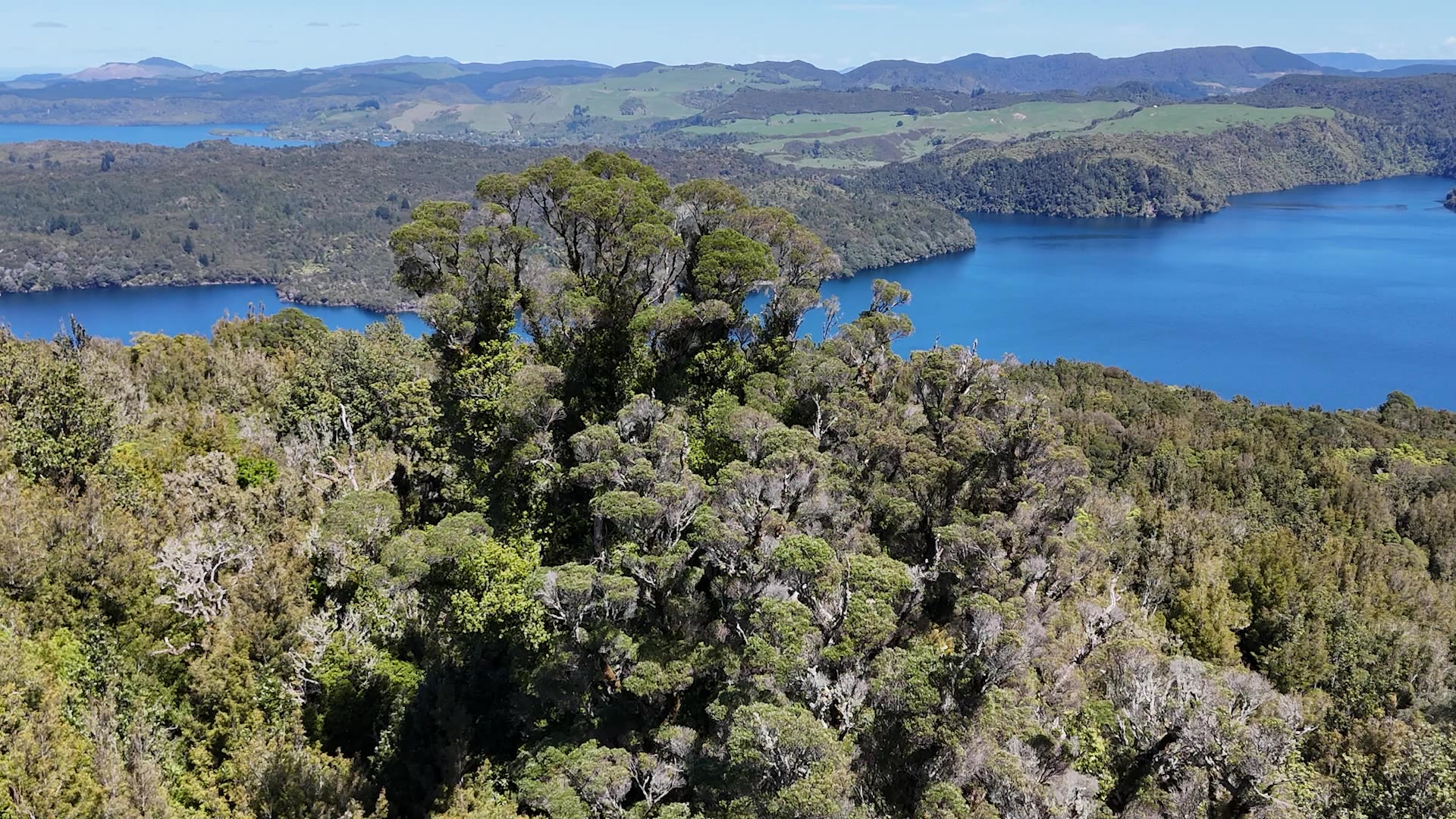
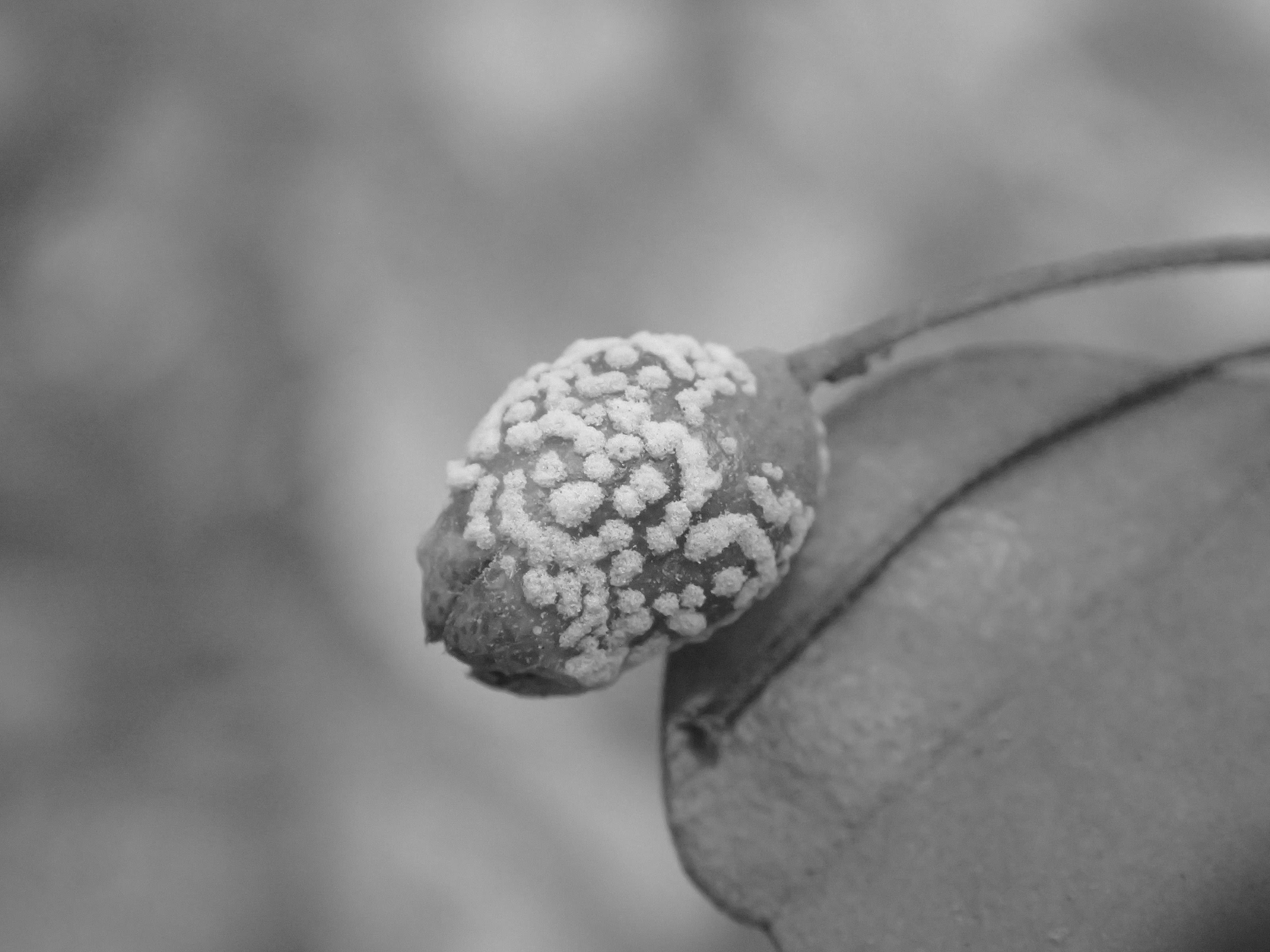
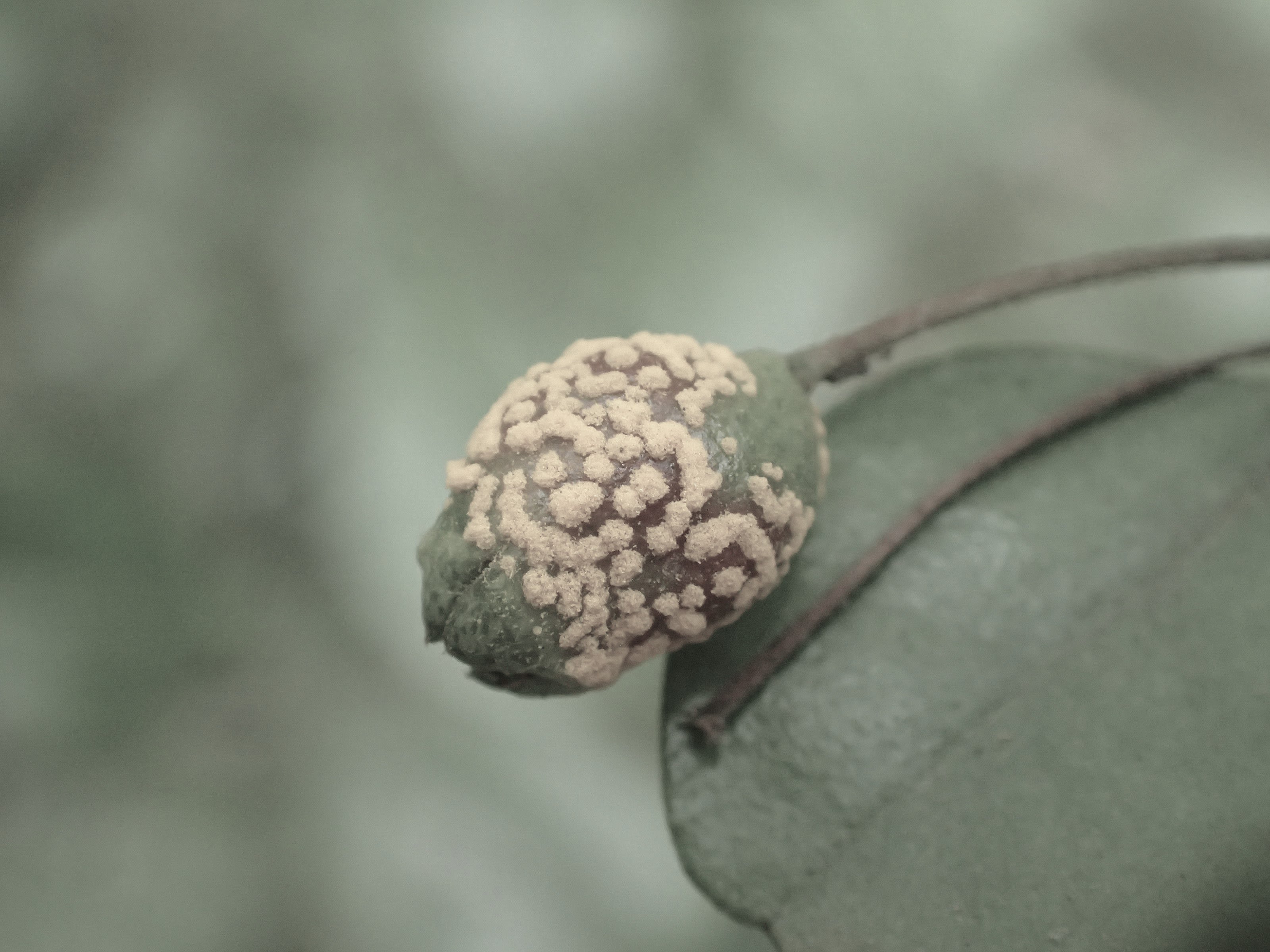
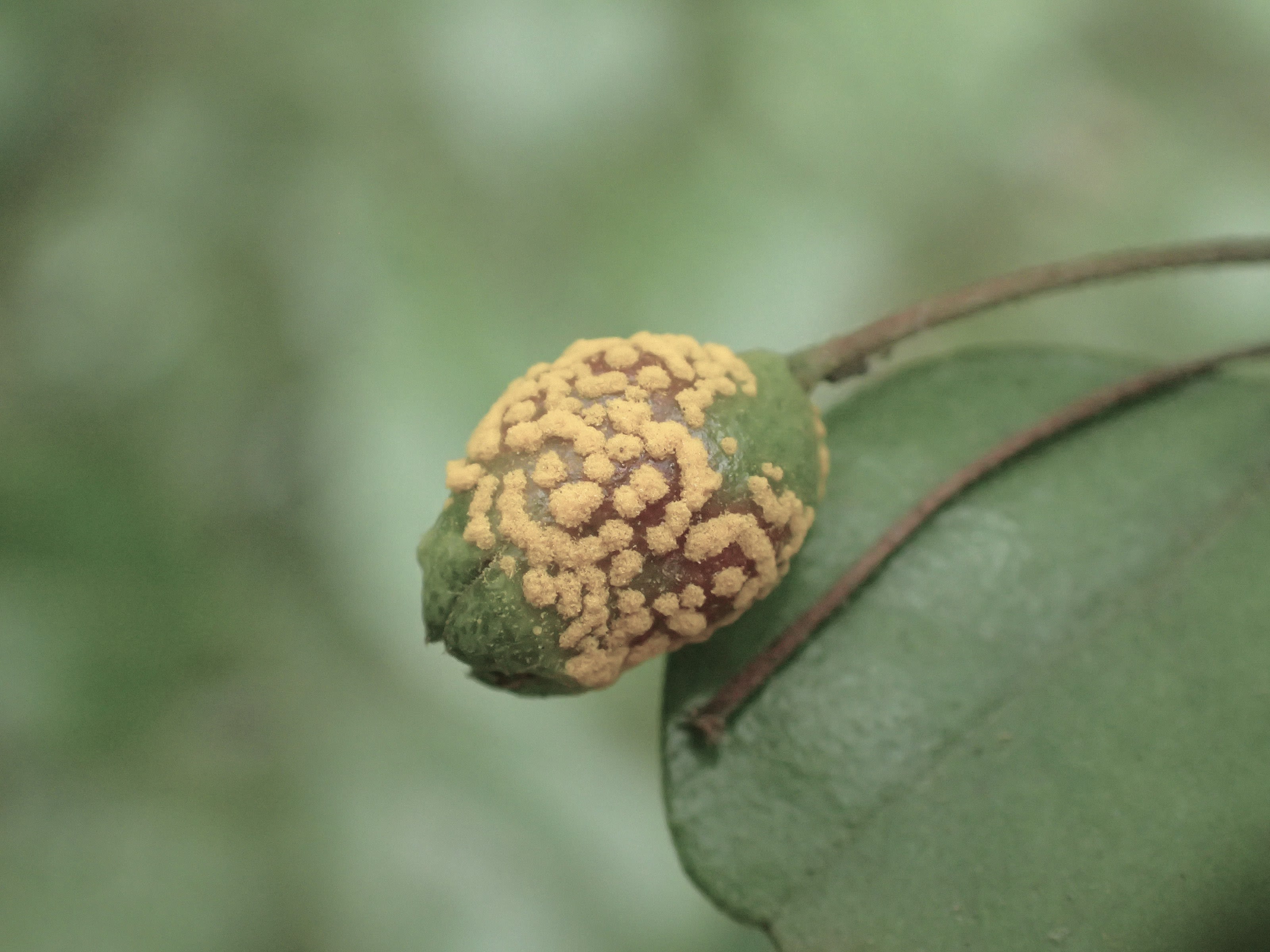
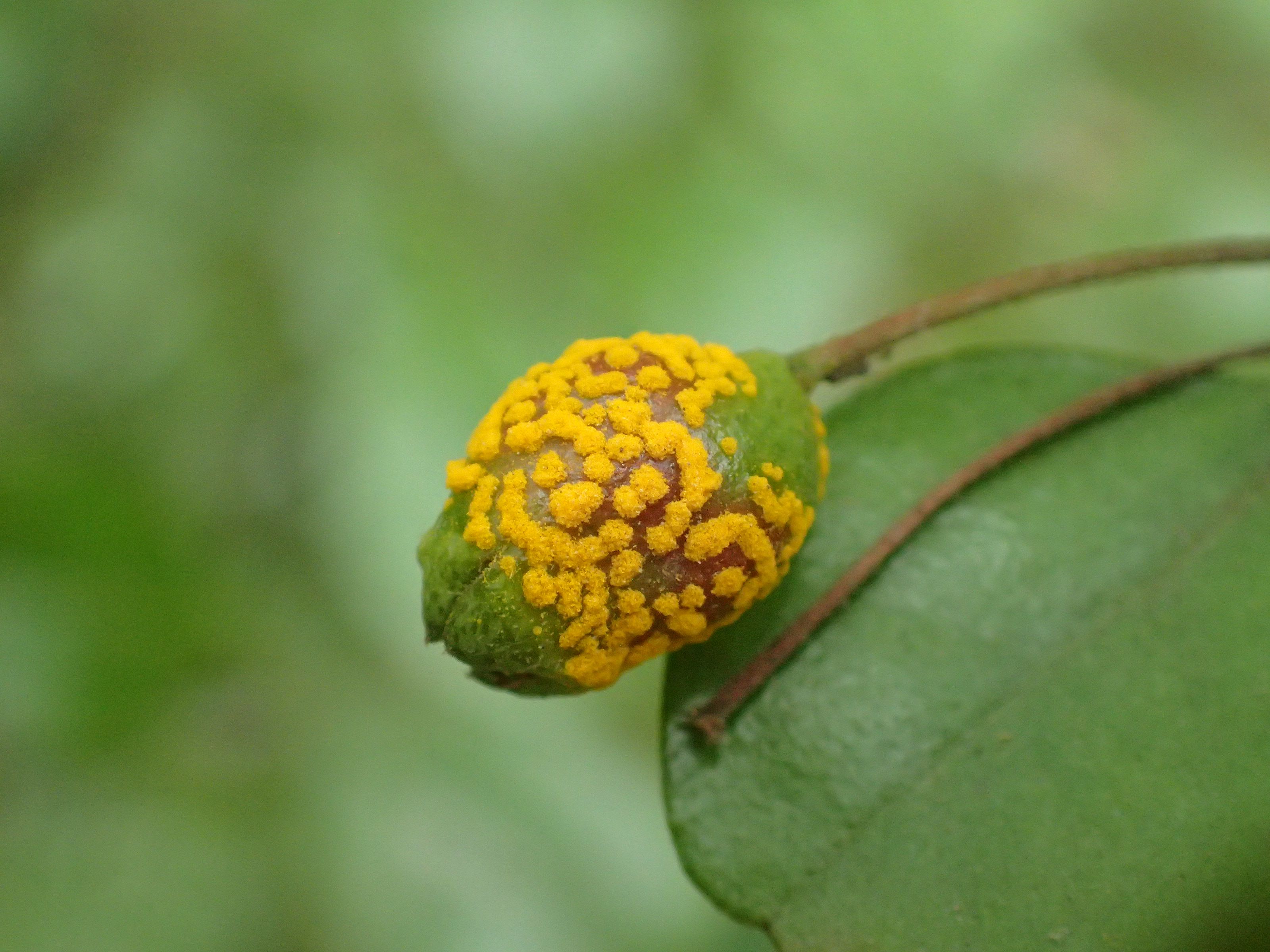
It's May 2017. Yellow spores have been discovered on shoots, leaves and flowers of plants in a nursery in Kerikeri. The same is soon found in Taranaki. The Ministry for Primary Industries and Department of Conservation, with help from iwi, industry and local authorities, spring into action.
Despite interventions and research, the disease causing the symptoms continues to spread.
Myrtle Rust has established in Aotearoa New Zealand.
The serious fungal disease poses a significant threat to New Zealand’s native flora, specifically members of the myrtle family including taonga species, like pōhutukawa, mānuka, rātā, and others.
Caused by the fungus Austropuccinia psidii, it spreads via wind-borne spores. The infection leads to reduced growth, dieback and, in severe cases, plant death.
Eventually, unsuccessful attempts to contain the disease pivot to long-term management through public awareness and research. But despite the serious threat myrtle rust poses to our ngahere (forests), this isn’t a story of despair.
It’s a story about coming together to try and achieve better outcomes for our taiao (environment). It’s a story of training people, creating jobs, fighting back. It’s a story which has seen thousands of hectares of ngahere mapped on foot.
Above all, it’s a story of partnership. Of mana whenua, Department of Conservation and a research institute coming together to fight this growing problem and provide hope.
Our at risk species
Ramarama
(Lophomyrtus bullata)
This evergreen shrub can grow up to 8m. It has oval shaped, thick and shiny leaves. It flowers from November to March and fruits from January to June.
Rōhutu
(Lophomyrtus obcordata)
A tree with thick, heart-shaped leaves and small white flowers, rōhutu is mostly found in coastal and lowland forests.
Pōhutukawa
(Metrosideros excelsa)
Pōhutukawa, known as New Zealand's Christmas tree, holds a prominent place in Māori mythology and the trees are sacred and protected.
Maire tawake
(Syzygium maire)
Maire tawake or swamp maire is an evergreen tree endemic to New Zealand in serious decline. It grows in wetland but tolerates dry seasons. Its white bark and branch pattern are distinct.
Northern Rātā
(Metrosideros robusta)
Belonging to the same genus as pōhutukawa, New Zealand has 10 rātā species including three trees, one shrub and six climbing rata.
Myrtle species
(Myrtaceae)
Myrtle rust affects all myrtaceae species. As well as those listed, it threatens natives like mānuka and exotics like guava and eucalypts (Eucalyptus fastigata seedling pictured).
Fighting the problem
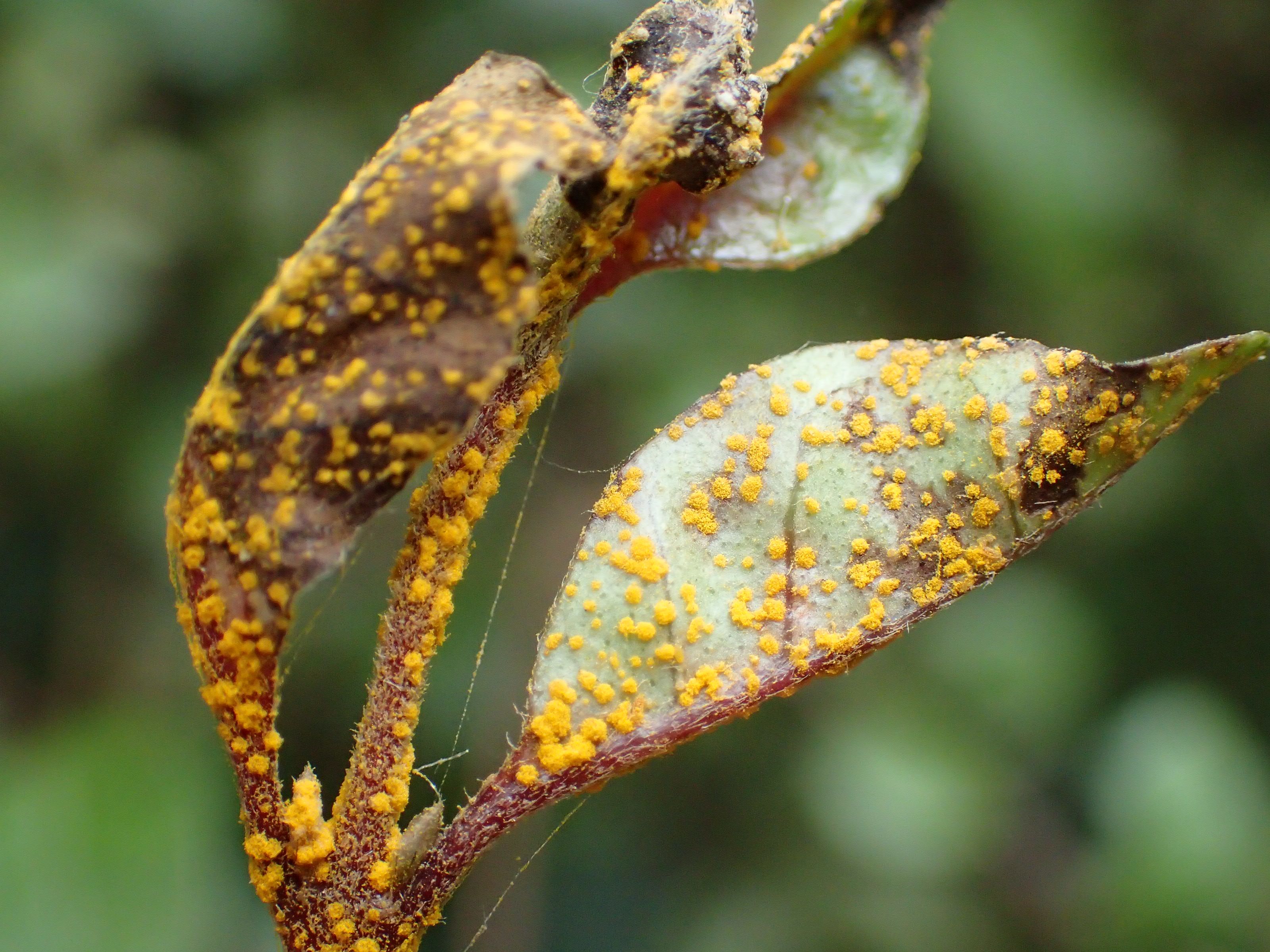
Around the Lakes District in particular, the population of Lophomyrtus trees — a genus of the myrtle family — is small.
Without intervention, it’s feared the species will be lost to this region. It is vital cuttings are successfully propagated before myrtle rust decimates the species in the field and researchers lose future access to fruit or seeds.
In 2022, the Department of Conservation – Te Papa Atawhai funded the ‘Myrtle Rust – Jobs for Resistance/Te Rātā Whakamaru’ project as part of the Jobs for Nature Mahi ō te Taiao programme – a $1.185 billion programme for projects benefiting the environment, people and regions. Rotoiti 15 partnered with Scion to deliver the three-year project. Its key objectives included:
- Employing, training and equipping field technicians with knowledge and skills.
- Surveying vulnerable populations of susceptible myrtle species.
- Establish monitoring transects and monitor affected species.
- Co-development of a conservation strategy including screening for resistance.
- Facilitating knowledge exchange with the community.
The programme launch in April 2022 at Te Waiiti Marae, Rotoiti.
The programme launch in April 2022 at Te Waiiti Marae, Rotoiti.
Representatives from Scion and Rotoiti 15 Trust.
Representatives from Scion and Rotoiti 15 Trust.
Scion's Pou Hononga – Māori Partnerships Lead Selwyn Insley at the launch.
Scion's Pou Hononga – Māori Partnerships Lead Selwyn Insley at the launch.
To ensure project success, Scion engaged mana whenua groups around collection, management, data storage and ownership and mātauranga. Rotoiti 15 Trust employed locals to deliver the work.
Rotoiti 15 also named Te Rātā Whakamaru inspired by a whakatauki relating to a Ngāti Tarāwhai tipuna Te Rangitakaroro who, when encouraged to join a battle with a neighboring iwi, responded “E hara au i te Rātā māmore, engari he Rātā komatanui te tū.” Meaning I am not a decrepit rātā, but rather a strong standing rātā that shelters his people.
Rātā Whakamaru refers to that tipuna and the importance of looking after your people, Rotoiti 15 chair Arapeta Tahana says.
The project officially launched in April 2022 at Te Waiiti Marae, Lake Rotoiti and training began.
"E hara au i te Rātā māmore, engari he Rātā komatanui te tū."
"I am not a decrepit rata, but rather a strong standing rata that shelters his people."
Training, Mapping, Monitoring
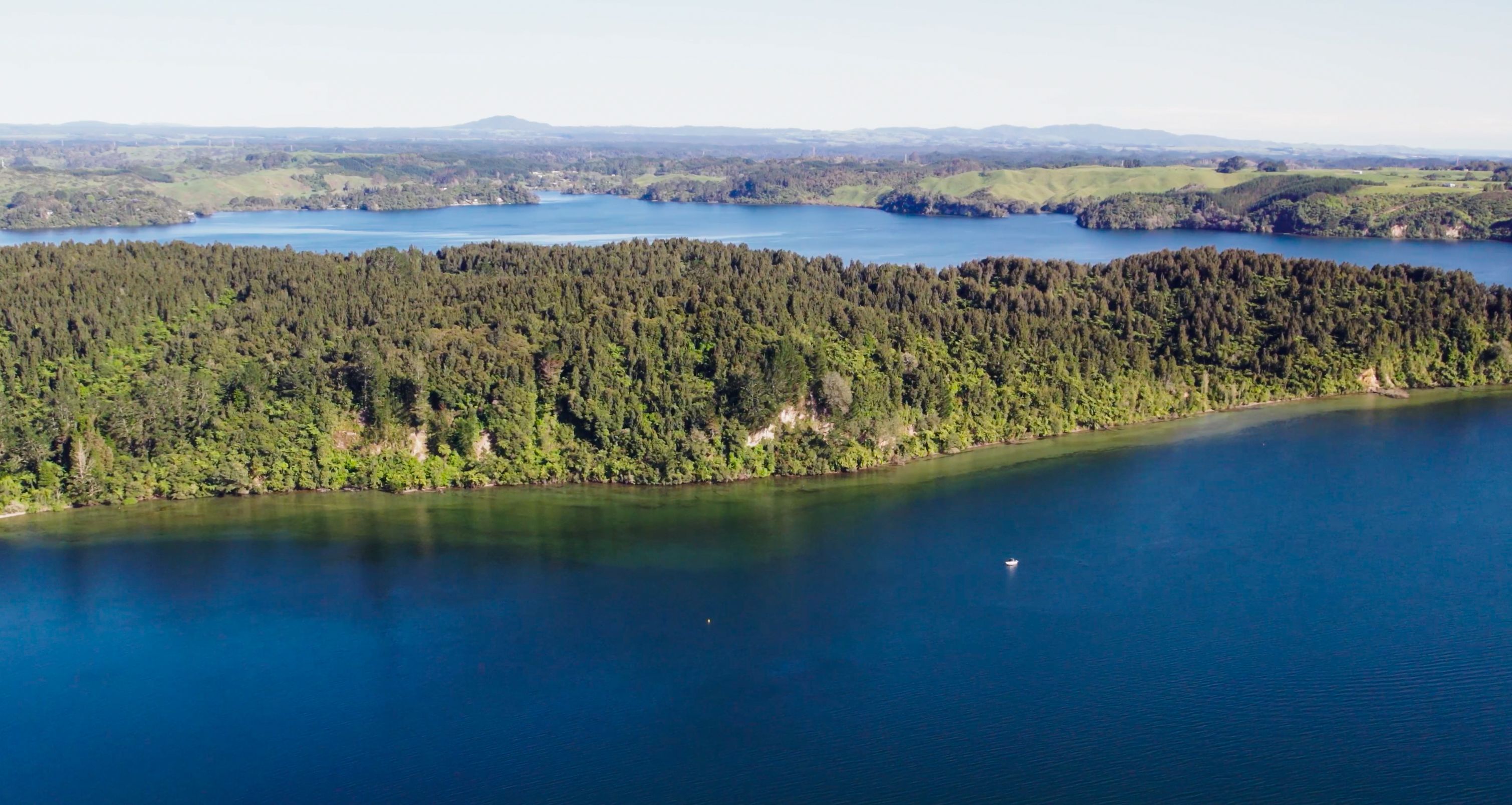
Scion and Rotoiti 15 representatives in December 2024.
Scion and Rotoiti 15 representatives in December 2024.
Heidi Dungey who helped initiate the project at Scion.
Heidi Dungey who helped initiate the project at Scion.
Rotoiti 15 hired 10 kaimahi (workers) for Te Tira Rātā (the field team).
They were trained in a range of disciplines including health and safety, plant identification, navigation, disease monitoring, cutting collection and propagation.
Over winter when myrtle rust is dormant, hōmiromiro (technicians) expanded their knowledge helping with other Scion projects. They did courses, such as one on native plant identification through Nelson Marlborough Institute of Technology.
They also gained skills in seed collection, breeding, bird identification, diagnostics, pest control, conservation and life skills like outdoor first aid, and CV and interview preparation improving employability beyond the programme.
Scion's project lead Darryl Herron says a key goal of the project was to create jobs, and he feels it achieved that.
"We've provided kaimahi the tools, we've given them the training, we've given the experience. The team’s had three years of on the ground training ... but we've also had them in our laboratories.
"We have a team of 10 highly-trained, specialised, field workers, who can do everything from identifying myrtle rust and forest health to pest management,” he says. “It enables mana whenua to take those learnings and do it for themselves.”
Working with a team of geographic information system specialists and botany experts, and looking at previous research in the area by others, priority areas were identified for surveillance and mapping of four key myrtle species: Ramarama, rōhutu, maire tawake, and pōhutukawa.
Surveillance and data collection began on May 30, 2022 around the Bay of Plenty including . . .
Lake Rotoiti Scenic Reserve, Lake Rotomā Scenic Reserve
Lake Ōkataina, and nearby Makatiti Dome.
Te Tira Rātā, led by field technical lead Jacqui Bond from Scion, started recording where they found key myrtle species, details and disease sign and severity. In total, they walked more than 3578.4km, twice the length of Aotearoa.
While Scion scientists knew of some myrtle species in the area, on-the-ground monitoring painted a more detailed picture of species’ population size, Bond says.
"We knew there were these vulnerable myrtles in the Bay of Plenty ... and we roughly knew where the plants were but we hadn’t really walked a lot of the land.
"At Ōkataina I thought there were 20 to 30 ramarama plants and when the team walked it and mapped it, there were almost 1000. That tells you the power of people on the ground.”
From there, 21 transects (a straight line along which researchers take measurements or collect data at regular intervals) were established for monitoring monthly initially, and fortnightly if myrtle rust was detected. Within the first four months of monitoring, more than 3300 Lophomyrtus plants (ramarama and rōhutu) had been identified at the sites.
A year into the project, every one of the Lophomyrtus in the Rotoiti transect had suffered total dieback and myrtle rust continued to impact fruit development at Ōkataina and Rotomā.
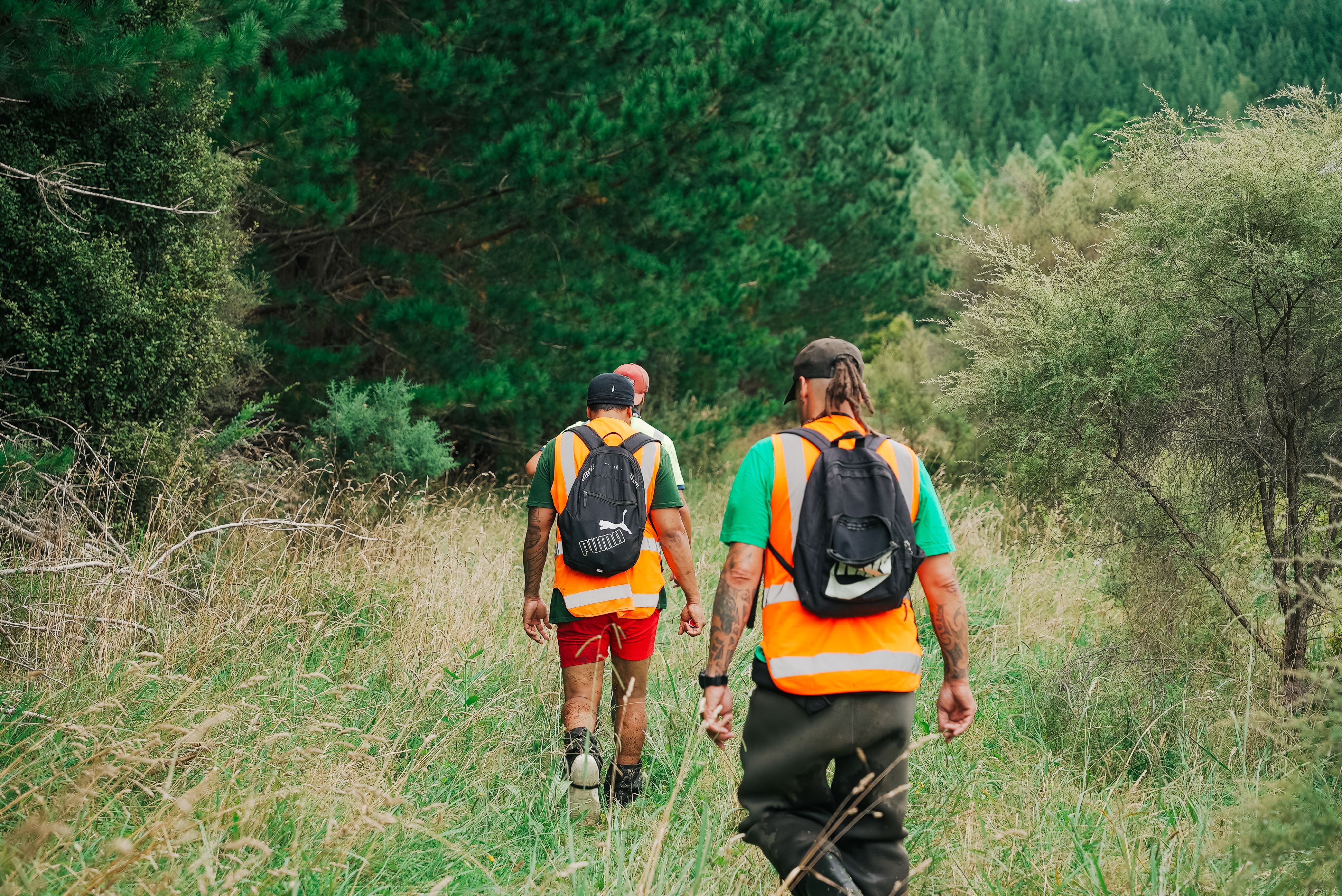
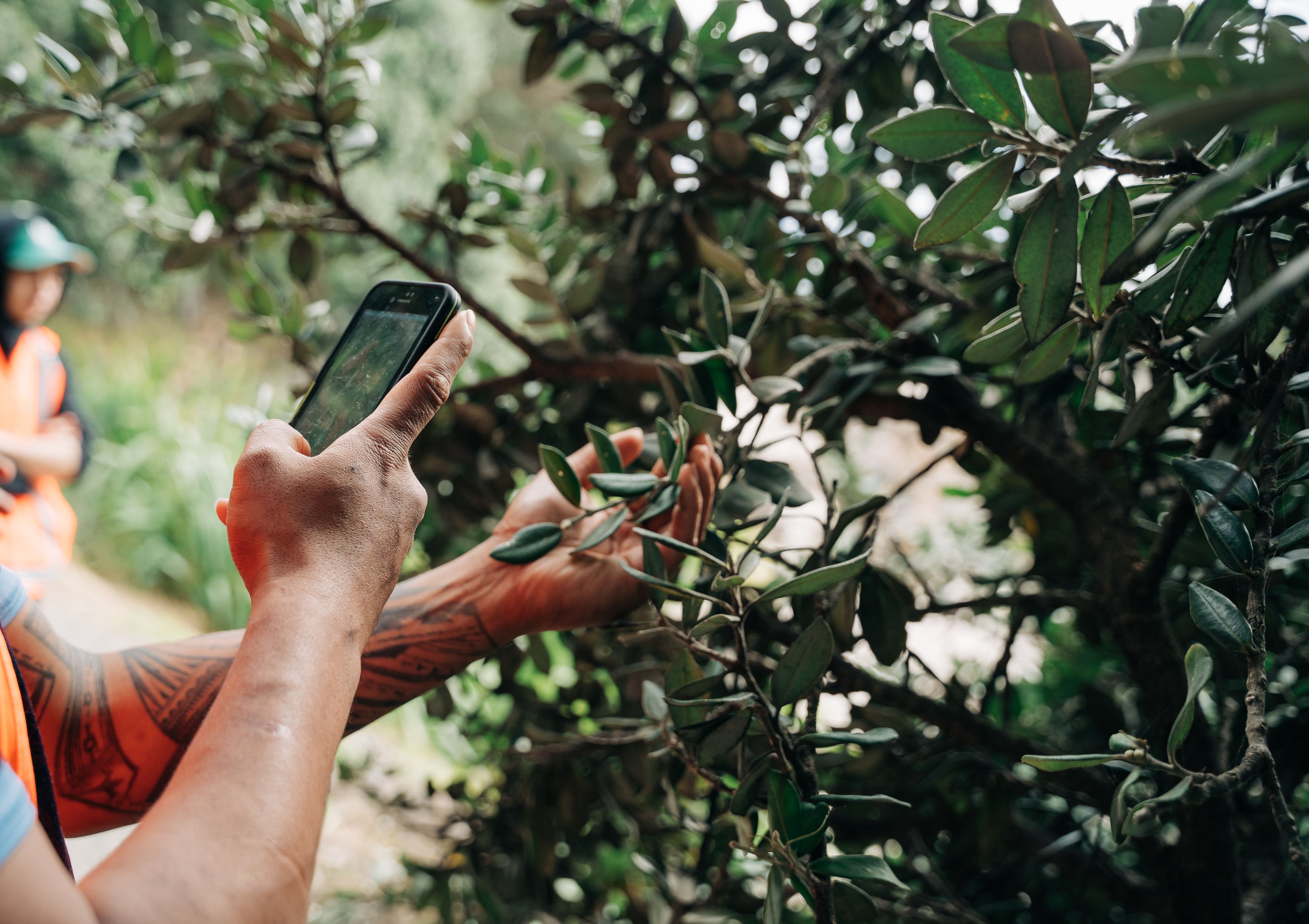
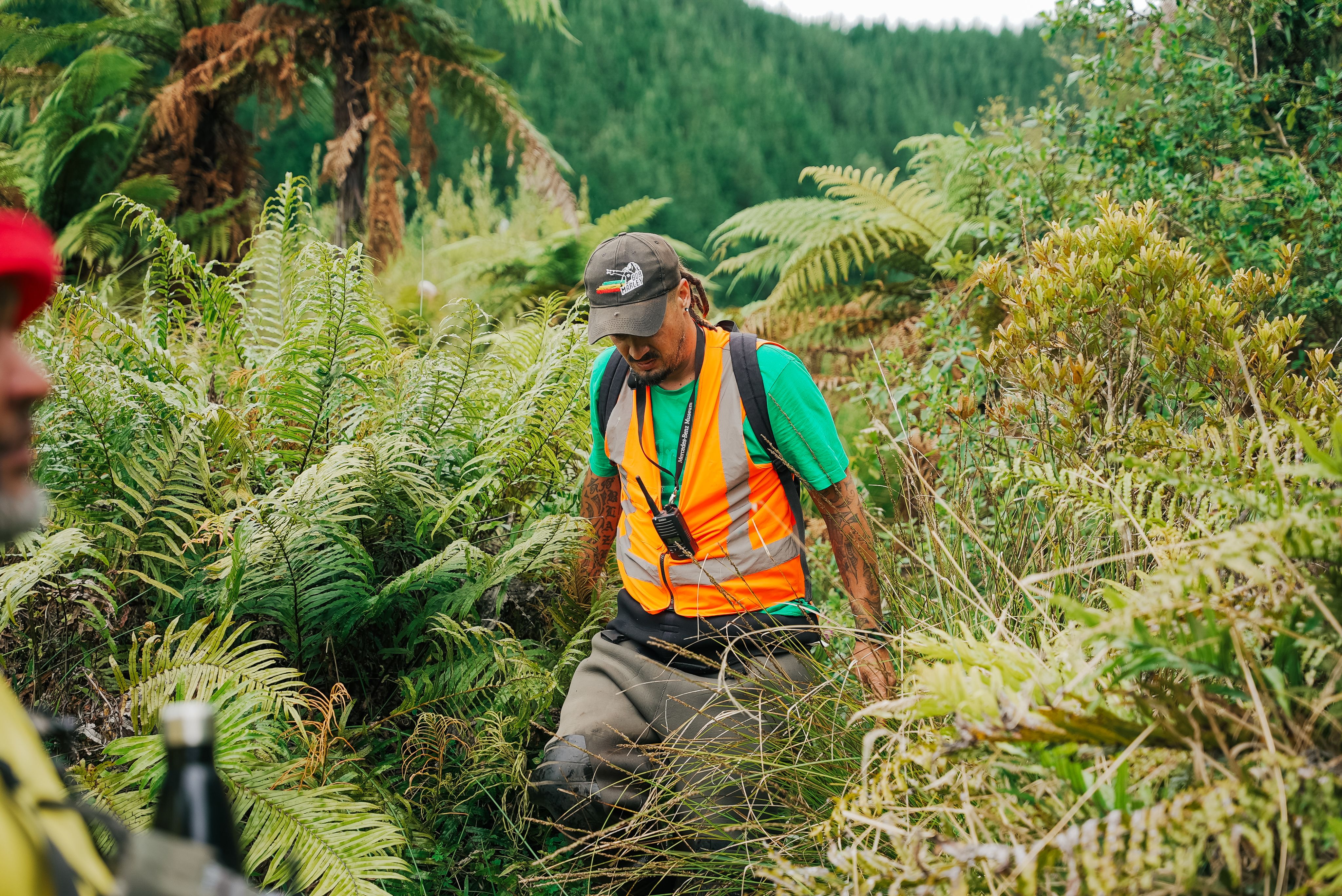
The team continued to check transects over winter and surveyed and mapped new locations, capturing data for analysis at Scion.
In late 2023, the team also began mapping maire tawake around Lake Rotoiti. Maire tawake is highly susceptible to myrtle rust and likely to become functionally extinct within the next decade. At one Ōkere Falls block, the impacts of myrtle rust on the species have been devastating with all of the 25 plants being monitored infected with myrtle rust by early 2024.
In the case of maire tawake, it appears there is no refuge from this fungal disease, even inside the forest.
Overall, the project mapped several important myrtle populations across Rotorua and the Bay of Plenty, including Ngongotahā, Dansey Road Reserve (Okohiriki), Whakarewarewa Village, Lake Rotorua, Lake Rotoiti, Lake Rotomā and Mauao.
The thousands of trees identified is no small achievement, especially given many of the workers couldn’t identify many native trees when the project began. Hōmiromiro Waimauriora Riini among them.
"At Ōkataina I thought there were 20 to 30 ramarama plants and when the team walked it and mapped it, there were almost 1000. That tells you the power of people on the ground."
- JACQUI BOND
“I came into this project knowing nothing about myrtle rust. I know a whole lot now. I know what it looks like, I know how to diagnose it, recognise it. I feel like our team, we've made a lot of big contributions to this project. Not just in this country but worldwide.”
Riini says the best parts of the project have been the knowledge gained and team connections. Two members of Te Tira Rātā have also gone on to do other relevant study such as an internship with Scion and an applied masters.
Rotoiti 15 Trust chair Arapeta Tahana says the growth of people has been one of the project’s main successes.
“We pulled together a crew of people that all had connections to iwi and the land around here but had very little knowledge of environmental protection of native forests.
"Those people now work competently alongside scientists, have strong knowledge of birds and native plants, have learned about themselves and their culture and built their identity as Māori."
He says the iwi now not only understands the threat of myrtle rust, but is equipped with solutions and hope, including knowledge of taking cuttings, propagation and raising seedlings to repatriate the ngahere.
“All of these skills are really important to us as an iwi and the long-term protection and enhancement of our environment."
For Rotoiti 15, the project was also about connection with te taiao, Tahana says.
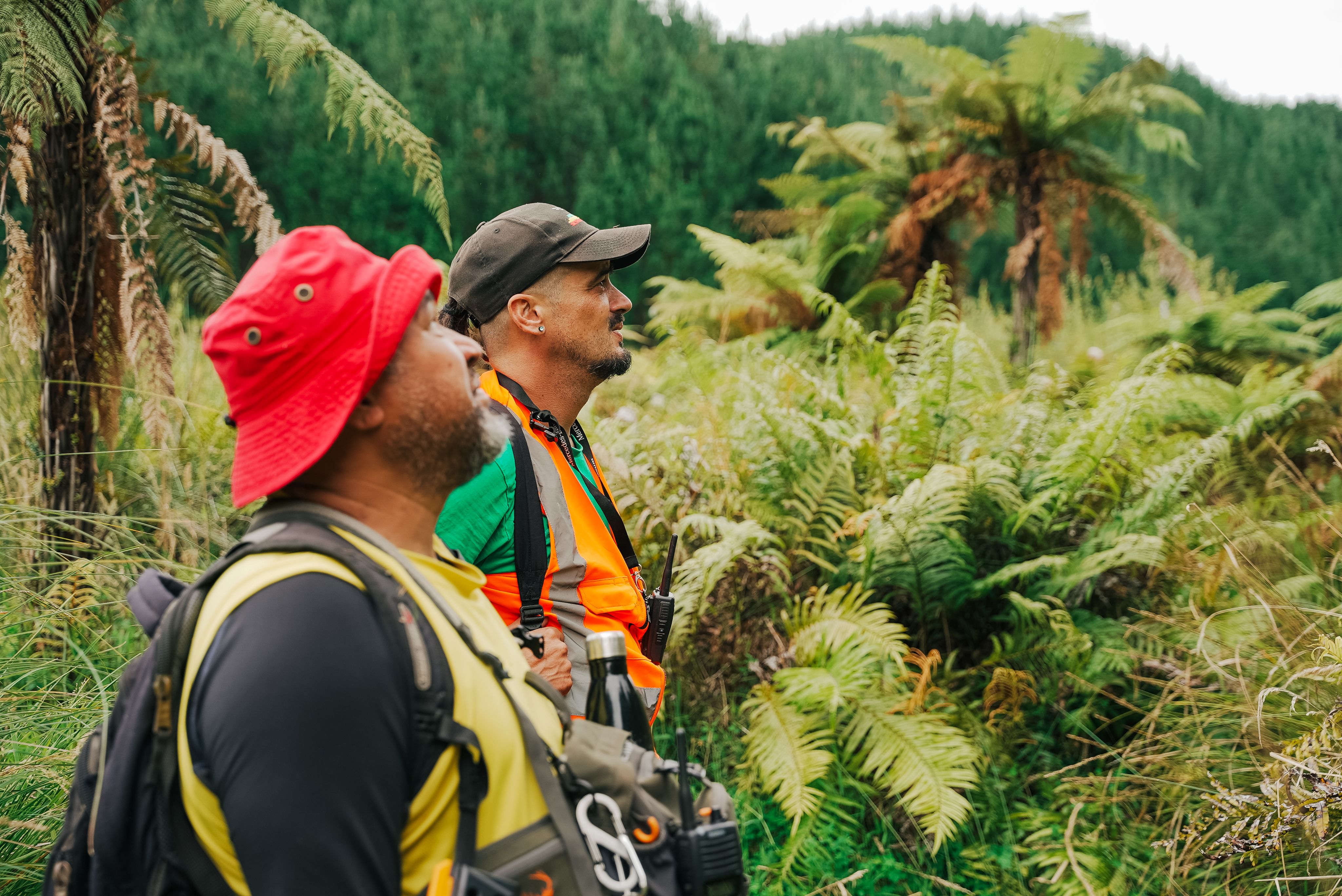
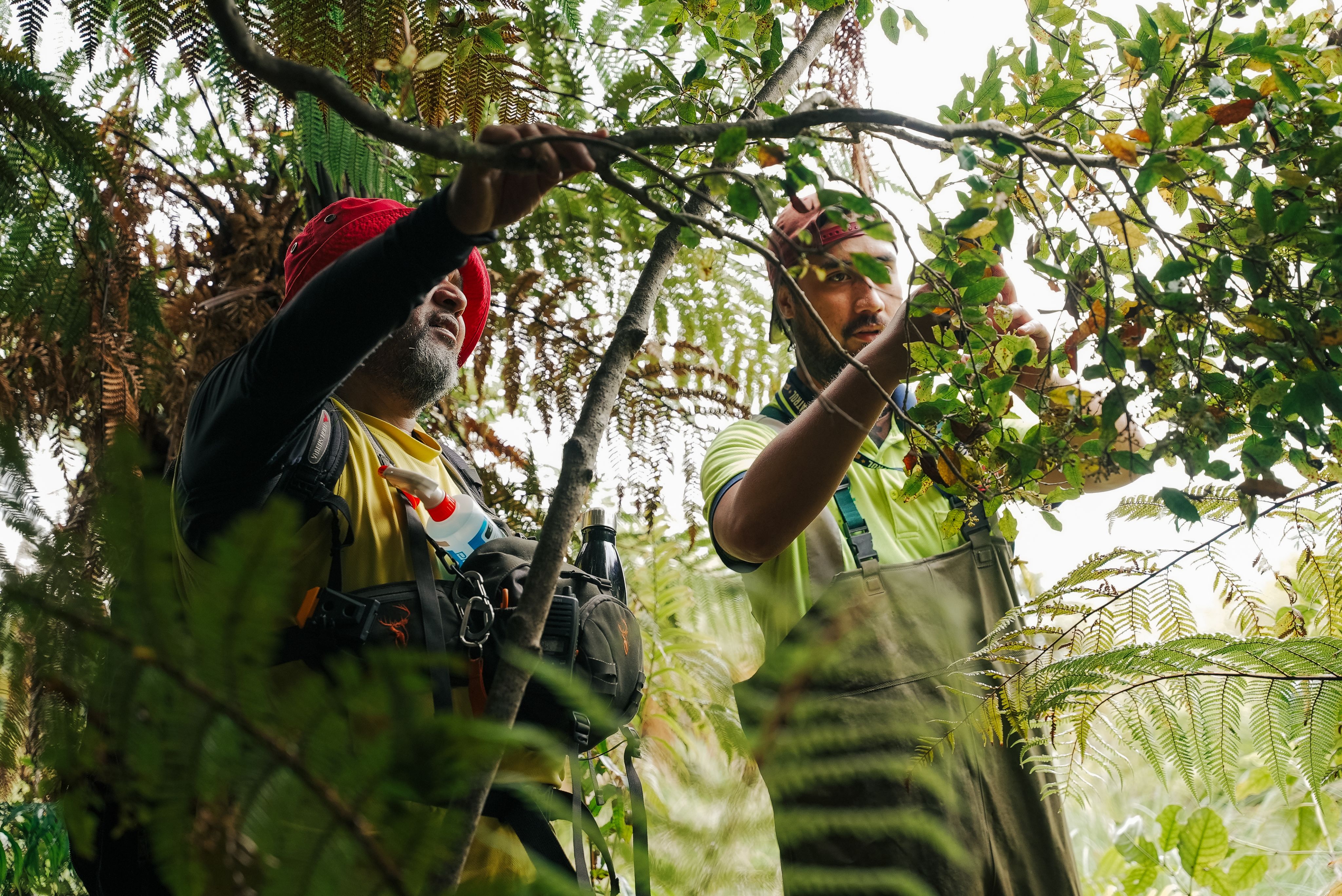
Sharing Knowledge
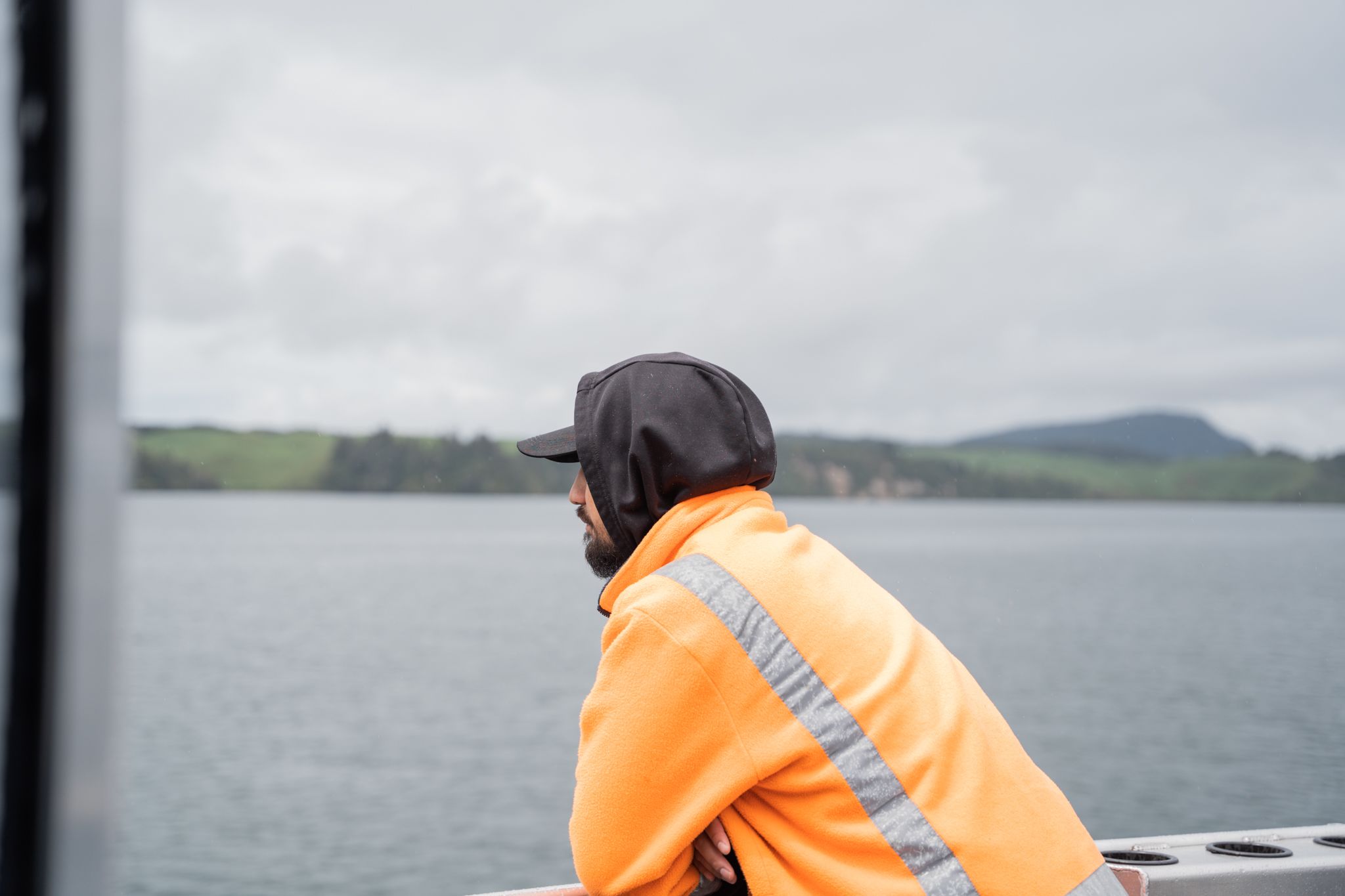
The project also involved exchange of knowledge and experience. In late 2022, the team visited the East Coast and Te Whakapae Ururoa, another hapū-led conservation programme funded by Jobs for Nature.
In May 2023, Catalyst Seeding funding allowed representatives to travel to K’Gari and Coffs Bay in Australia as part of a cultural exchange looking for solutions to myrtle rust using indigenous knowledge systems. The visit was later reciprocated and documented on video.
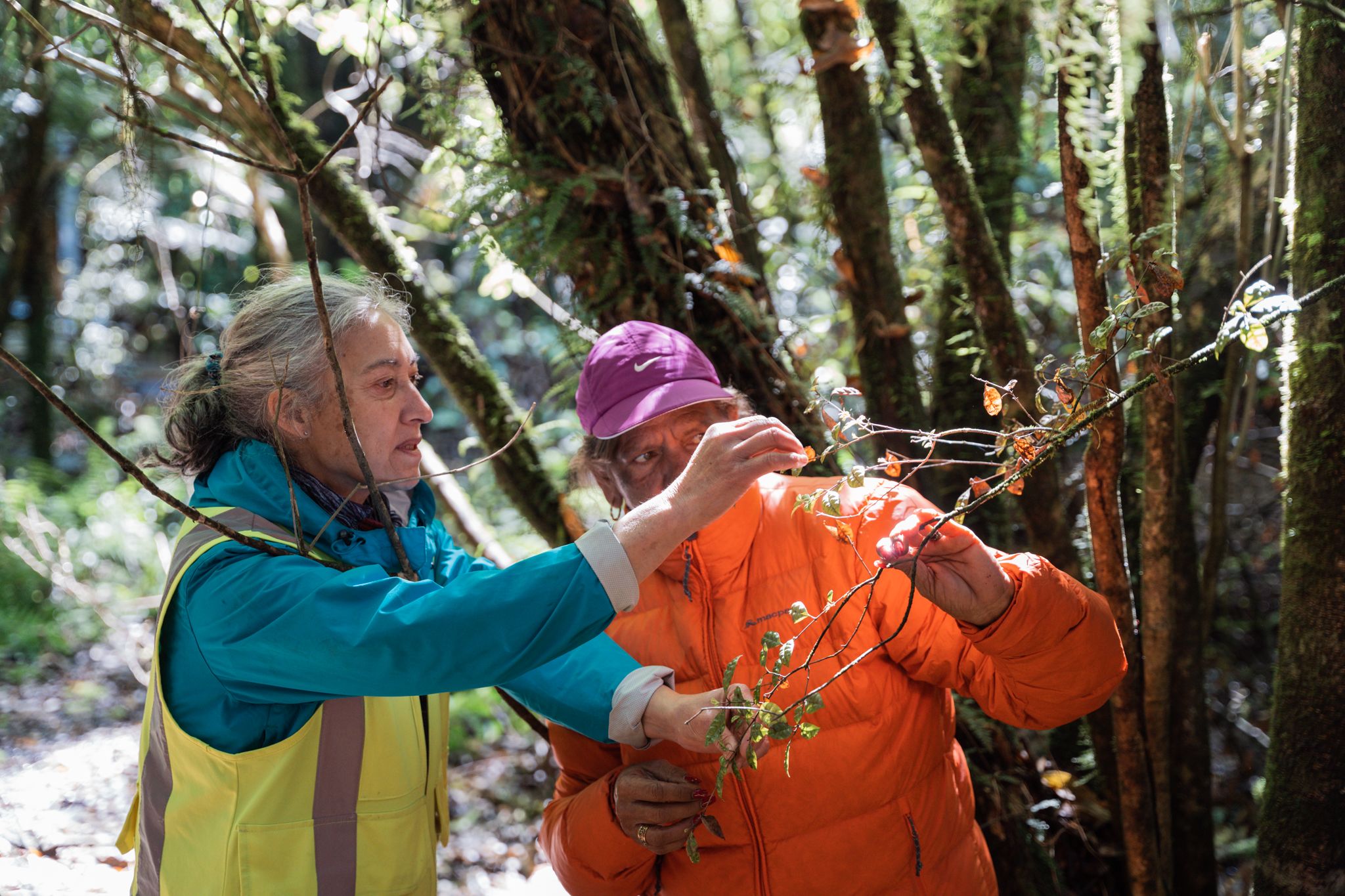
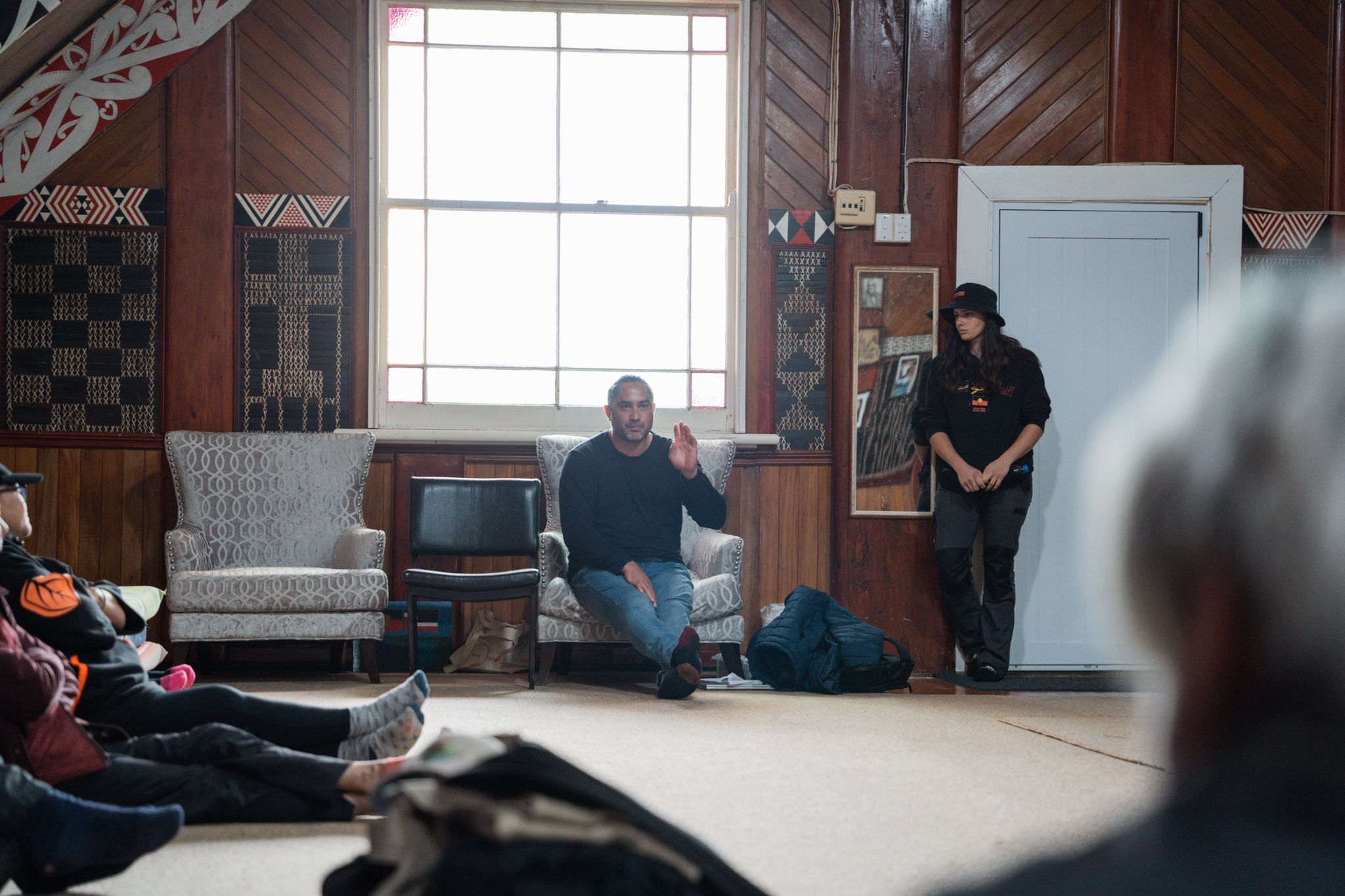
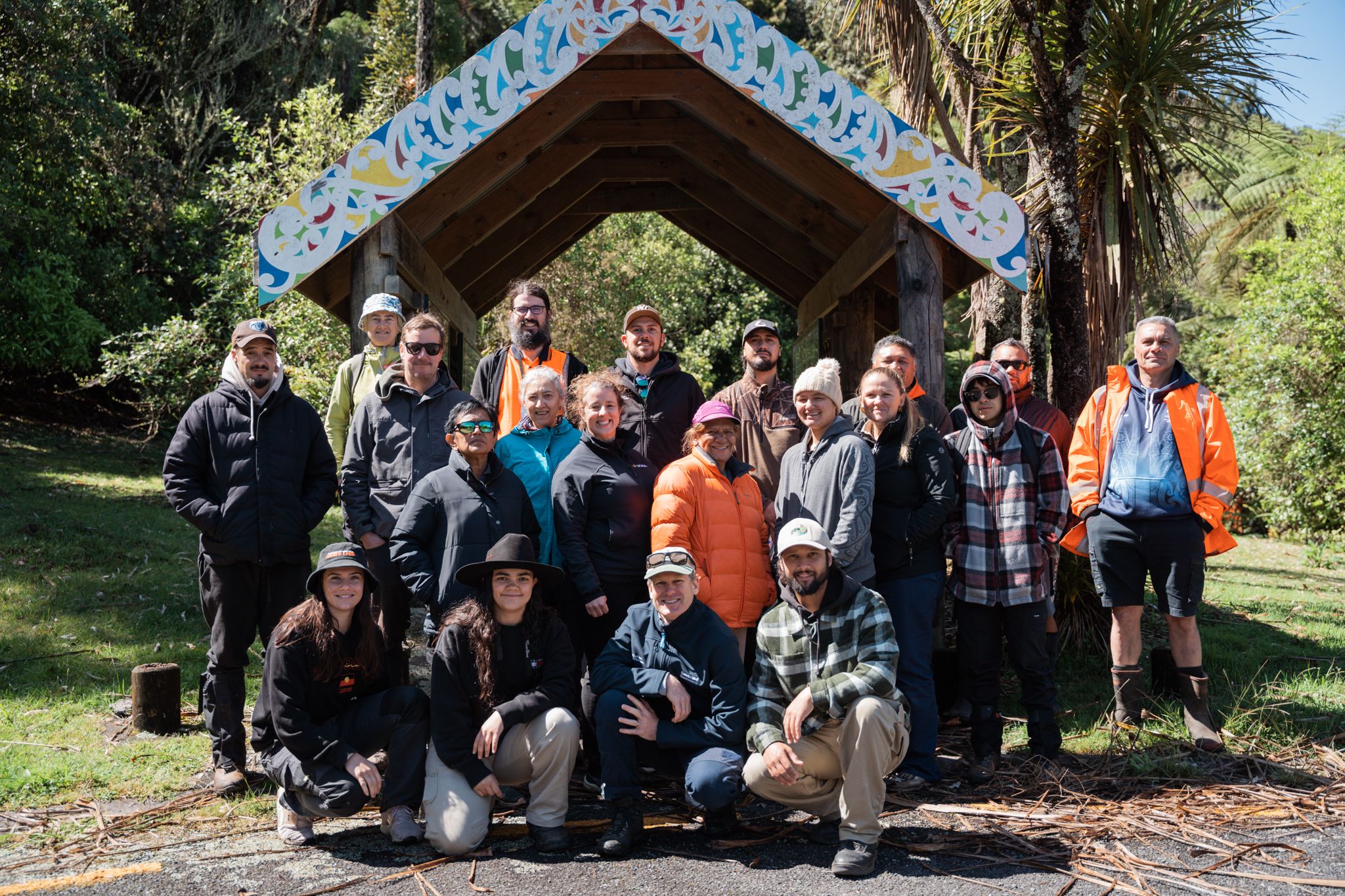
Over time the team was called on to share knowledge elsewhere, such as when myrtle rust was reported on Mauao (Mount Maunganui) and transects were established on the maunga.
Several videos were also created during the project providing engaging and accessible information.
After more than two years of training and hands on experience, we must do all we can to ensure the investment in developing the skills, expertise and insights of these kaimahi is not wasted.
The hunt for resistance
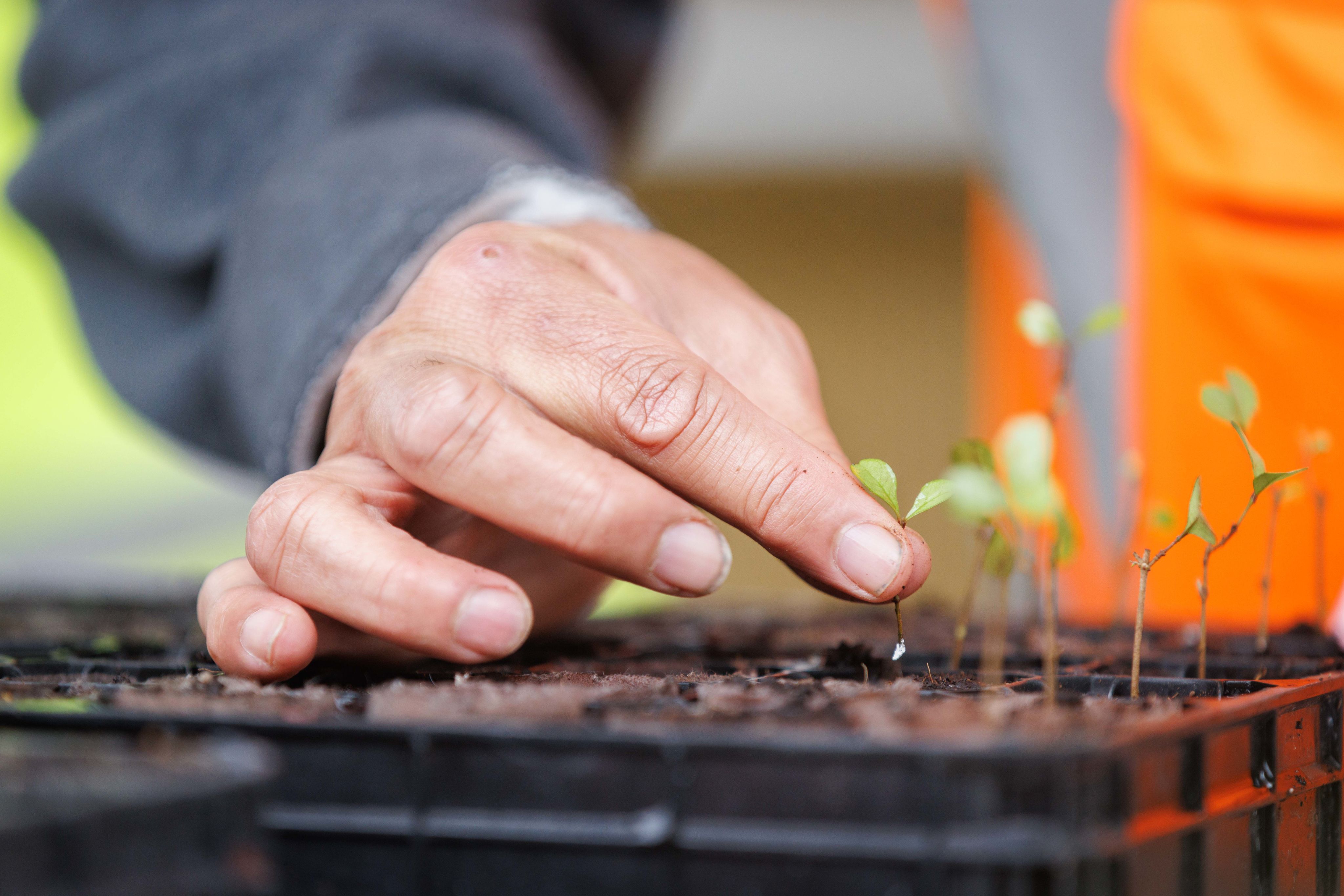
Myrtle rust susceptibility in the field is influenced by multiple factors, including humidity, temperature, wind and plant genetics.
But if we can find plants with some level of disease tolerance or resistance, maybe we can learn from these and breed for resistance.
After the last transect measurements were taken in April 2024 and tags removed from trees, the attention shifted to searching for disease tolerance.
The hunt for resistance was centred in Scion's nursery. Kaimahi had taken more than 800 cuttings from the ngahere and included more than 400 in trials. Two breeding trials were established in Scion’s nursery to identify tolerance and there are hopes these can be replicated in the field.
During ongoing trials, we’re hoping to find signs of resistance among the ramarama and rōhutu. Any promising seedlings can be cross-pollinated and the next generation deliberately infected to see whether resistance is heritable. That could provide hope and tolerant individuals could be propagated and returned to the ngahere.
Breeding for resistance requires a multi-year approach beyond the timeline of the project but efforts in breeding and conservation are poised to stand as the project’s enduring legacy. It will offer guidance, resources and establish a foundation to continue conservation long after it ends.
The importance of partnership

The collaboration between Scion and Rotoiti 15 Trust has been at the heart of the project’s success.
Tahana says the Jobs for Nature programme aligned closely with Rotoiti 15 Trust’s values and aspirations – particularly kaitiakitanga (guardianship) and tiaki taiao.
“This isn't just about Rotoiti 15, it's about our affiliated iwi; Ngāti Rongomai, Ngāti Pikiao, Ngāti Tarāwhai, and our whole rohe. It’s about building our capabilities to be kaitiaki of our place into the future,” he says.
“This has been an awesome project for us to start working alongside scientists, alongside government agencies, to tackle the big issues that face our environment.”
Tahana says Te Rātā Whakamaru demonstrated that mātauranga Māori and mana whenua groups can make these projects more successful than when they’re delivered purely by a government agency.
“This could be a model of how science and kaupapa Māori can co-exist and benefit each other.
"That's the biggest legacy of this project. Really galvanizing that passion and inspiration within us to be on our own whenua, to be looking after our own whenua.”
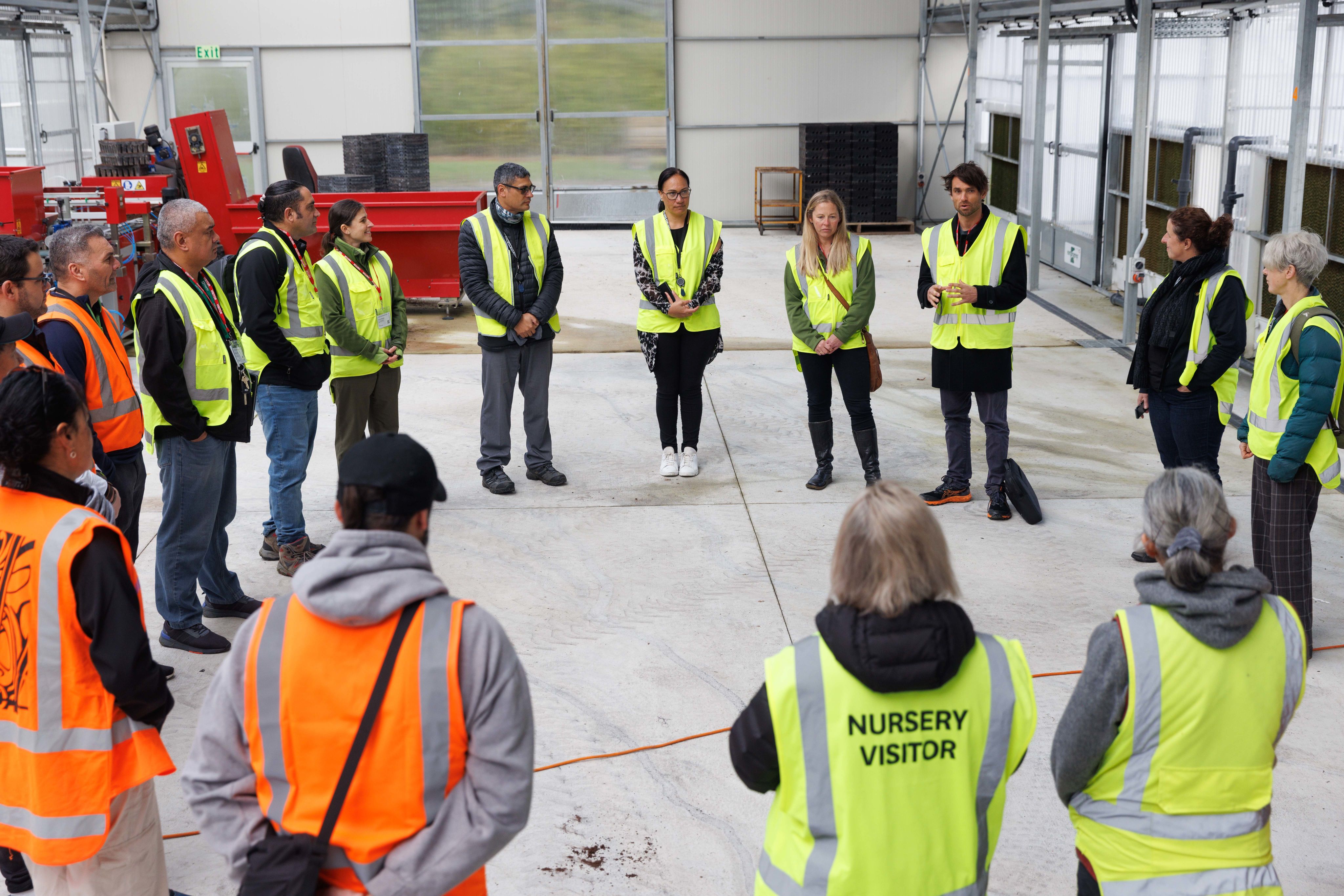
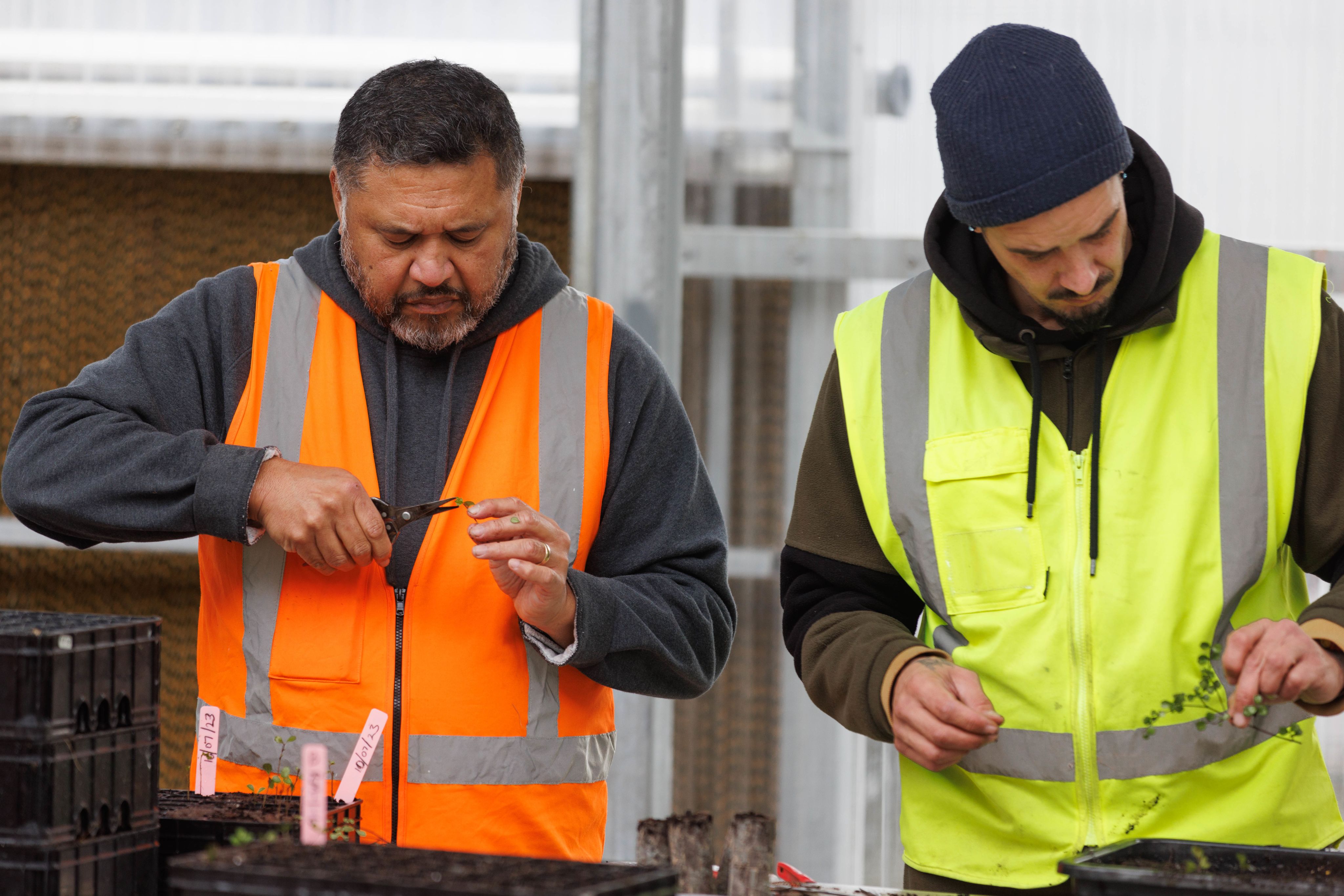
Taupe Pou Poasa first joined the Te Rātā Whakamaru team in 2022 as a hōmiromiro (technician) before progressing to be one of two manukura (supervisors).
He says "being proud of this team is an understatement".
“This team has taken on board everything that has been asked of them - physically, mentally and even in the spiritual wairua side of things. All of it encompasses how much they've developed and made themselves better people than they were before starting this project.”
If there is one word to sum up the field crews, it would be kotahitanga (unity), he says. Poasa also saw the importance of blending western science with mātauranga Māori and personal whakaaro (opinion).
“The sciences that were around from our Māori perspective, from that whakaaro, it still applies to what science is showing today ... The gelling of knowledge is key.”
For Poasa, the biggest reward has been being part of a team, a rōpū that has grown into a whānau.
Taupe Pou Poasa in the field.
Taupe Poasa in the field.
What's next




Initial data from breeding trials showed variation in infection rates — some plants collected from around the rohe were severely impacted by myrtle rust, others showed little to no sign.
After the end of the project, Scion will continue to monitor the two breeding trials over another myrtle rust season, looking for resilient plants.
Plant material not included in the trials will be assessed for repatriation to the ngahere in 2025 in co-ordination with mana whenua and consultation with the Ministry for Primary Industries.
Conservation isn't something you can do for just three years.
“We've seen with other pests that even after six months of not trapping, a lot of that work can be eroded quite quickly,” Herron says.
His hope is the project can act as a framework for collaboration between CRIs and communities. Herron says the likes of research institutes, universities, and private sector with a stake in the health of the environment should be connecting with communities to further conservation.
"Our role and responsibility should be to facilitate learning and equip all New Zealanders with the tools to do the job."
In December 2024, the team came full circle, once again gathering at Rotoiti's Te Waiiti Marae where the project launched, this time to reflect on the years of mahi and research.
It was bittersweet. While the project is ending, myrtle rust prevails. It will continue to be a growing problem in the future and it’s vital to look at ways to continue to get communities involved and invested in fighting the battle.
Collaborators
Contact
If you have any questions or queries about the project, please contact enquiries@scionresearch.com referencing Jobs for Nature.
News and videos
- Te Rātā Whakamaru Youtube playlist
- Mātauranga Māori project combats myrtle rust in Rotoiti (Te Karere), Dec 2024
- Arapeta Tahana on Waatea News, Dec 2024
- The Forgotten Pandemic (New Zealand Geographic) Jul 2024
- Indigenous communities and researchers unite to combat myrtle rust threat (Scion), Apr 2024
- Indigenous knowledge, western science work together to protect native trees (Te Ao Māori News) Apr 2024
- Fight against myrtle rust (Bay Conservation Alliance) Mar 2024
- Community science solutions for employment and myrtle rust resistance Beyond Myrtle Rust webinar, Feb 2024
- Race to save Rotorua's native trees nurtures local rangatahi (RNZ), Sept 2023
- Conservation efforts step up to protect native taonga (NZ Herald) Aug 2023
- Race against time to save Rotorua lakes trees (Farmers Weekly) Jul 2023
- Science recruits target myrtle rust species, (Scion), Feb 2023
- FAQs- Te Rata Whakamaru, (Rotoiti 15), Aug 2022
- Science recruits put myrtle rust in spotlight (BOP Business news) Jul 2022
- Te Rata Whakamaru - New science recruits put myrtle rust in the spotlight, (Rotoiti 15), May 2022
- New science recruits put myrtle rust in the spotlight, (Scion), Apr 2022

